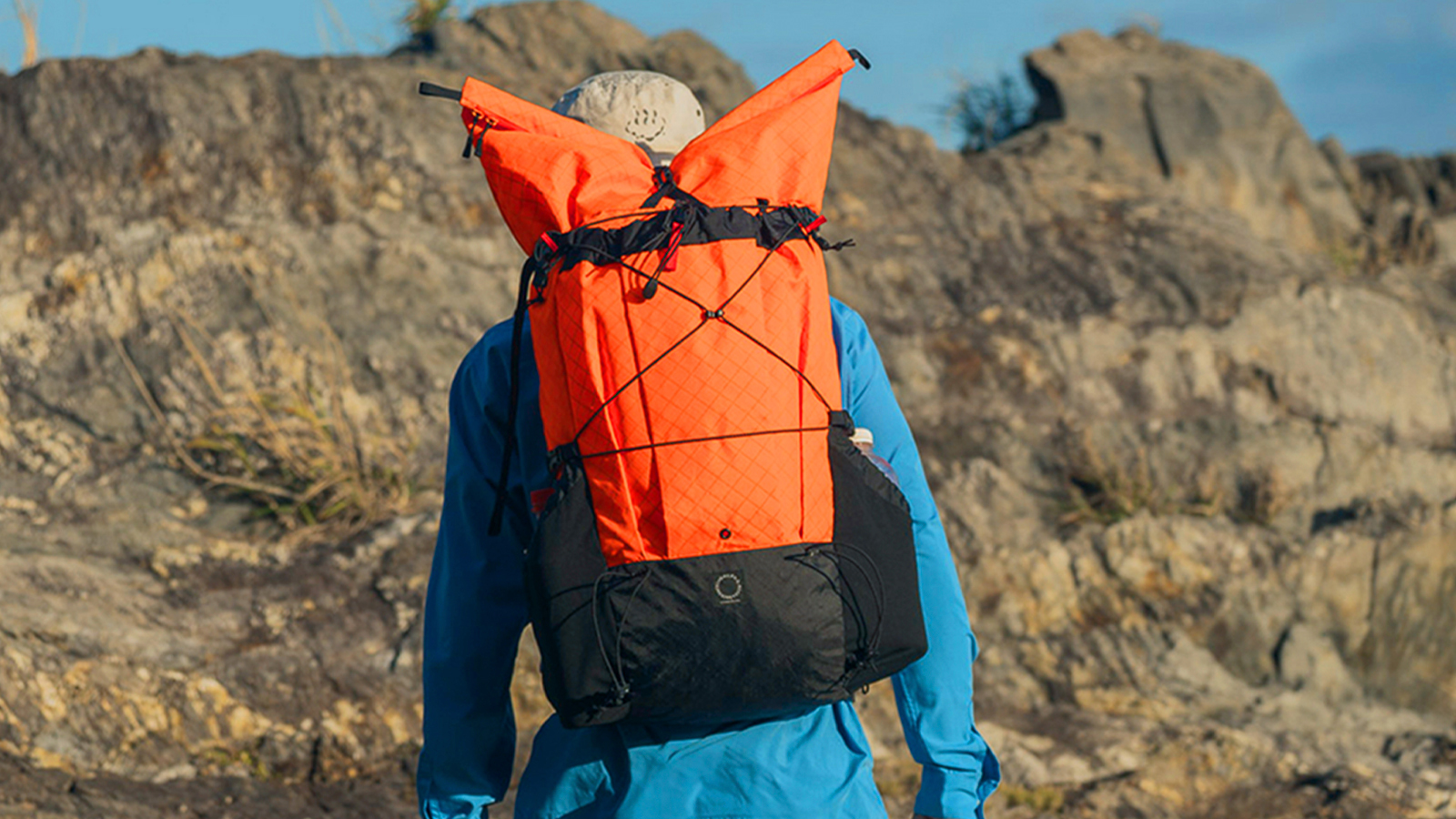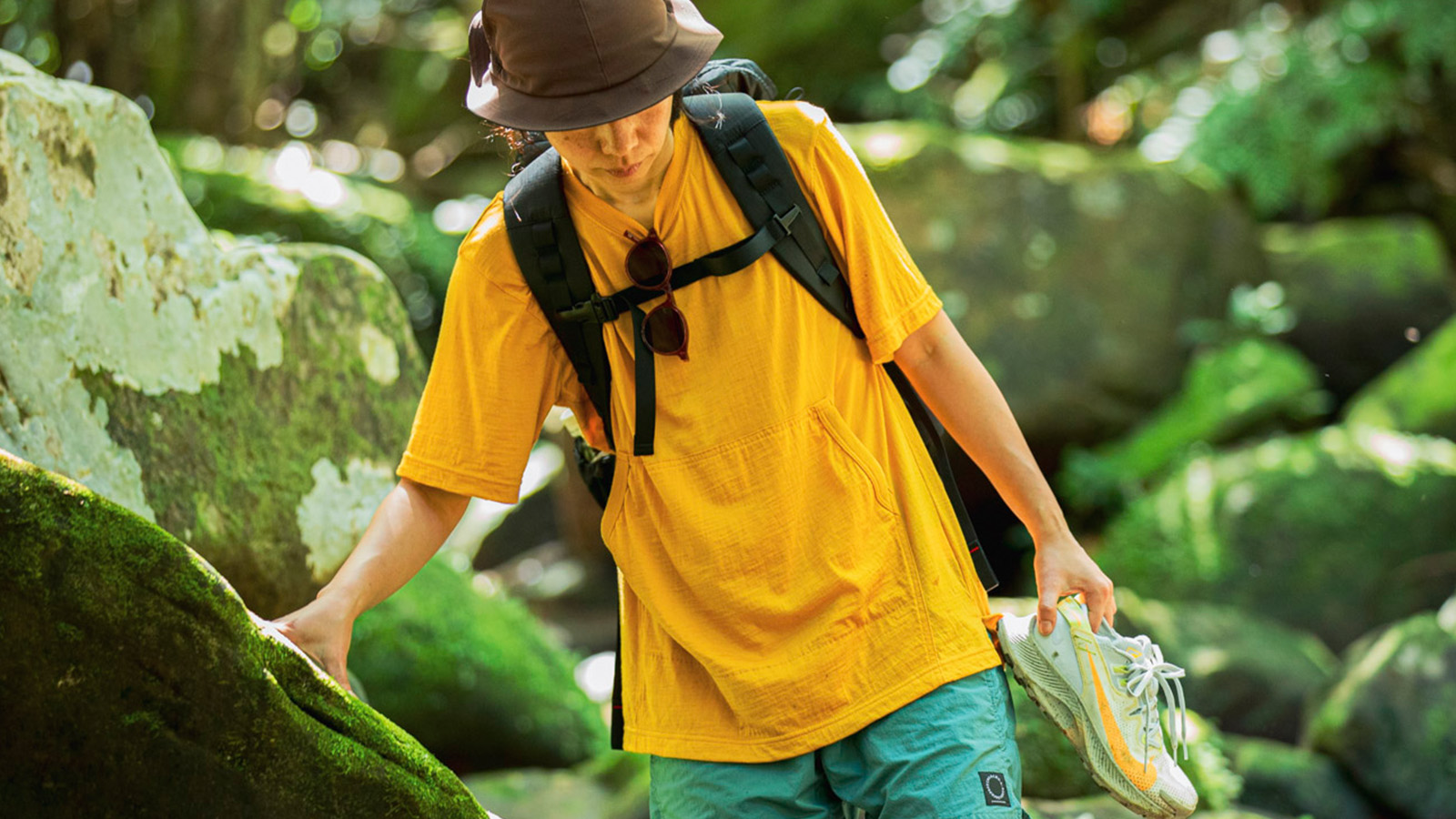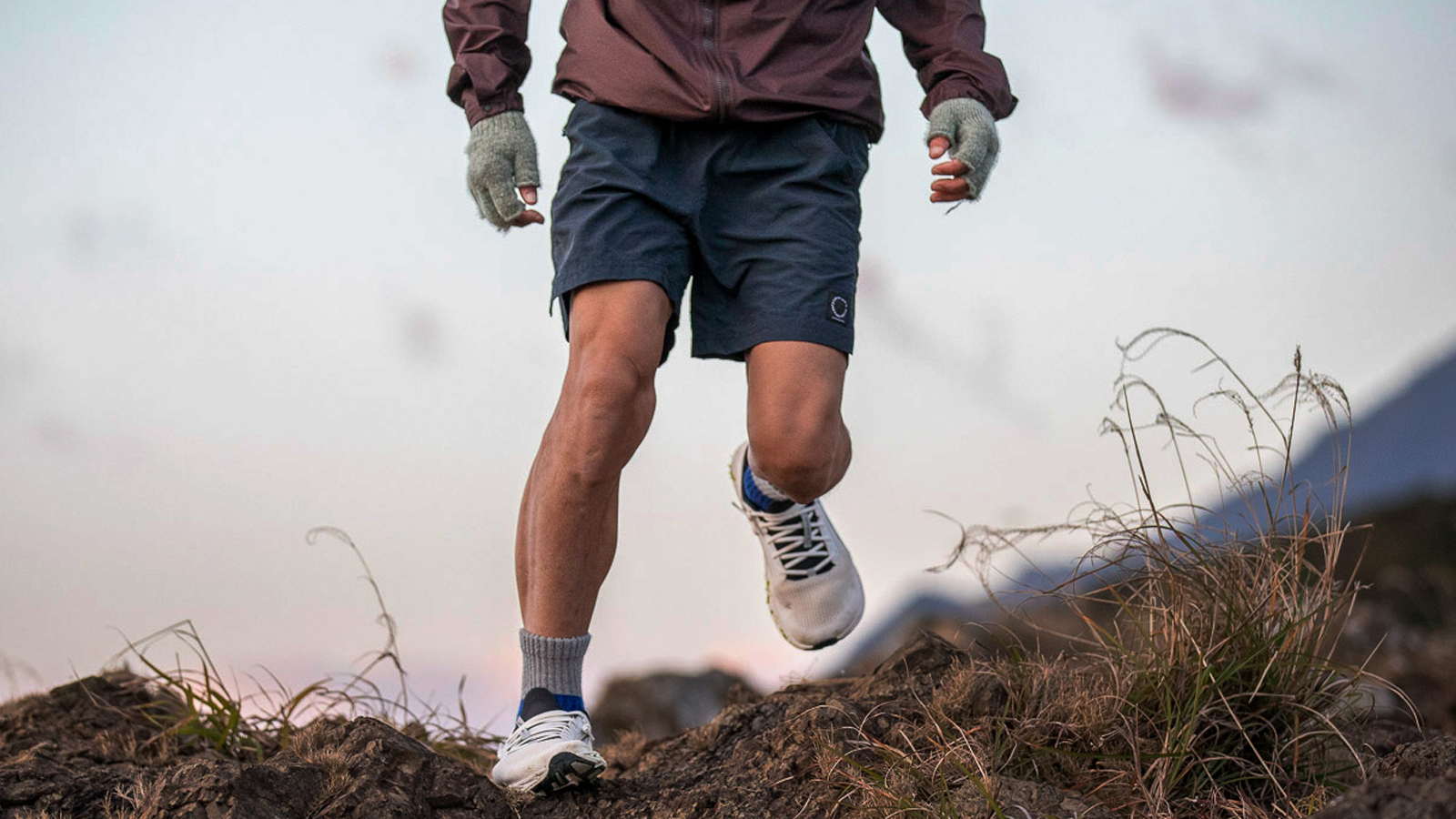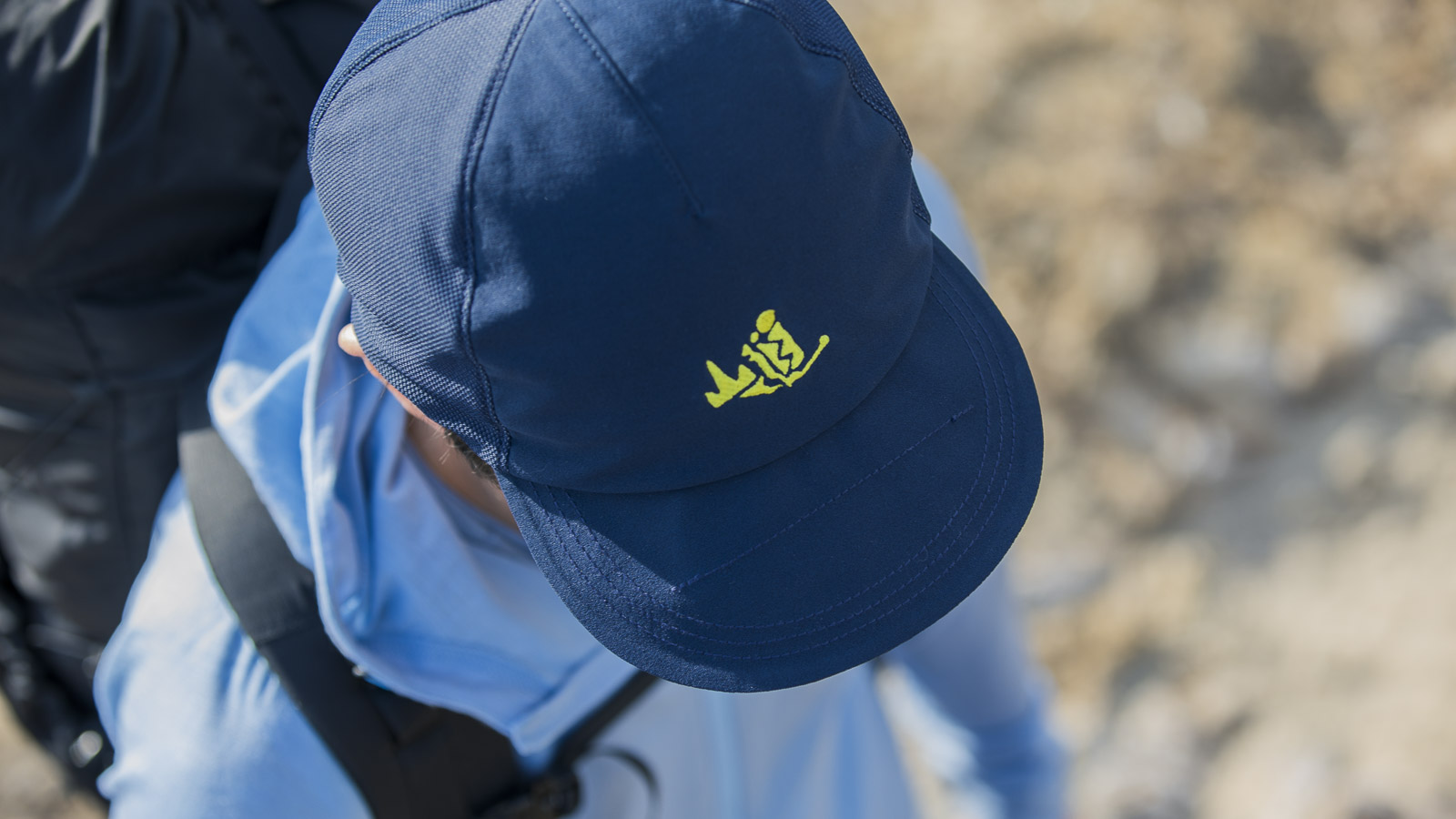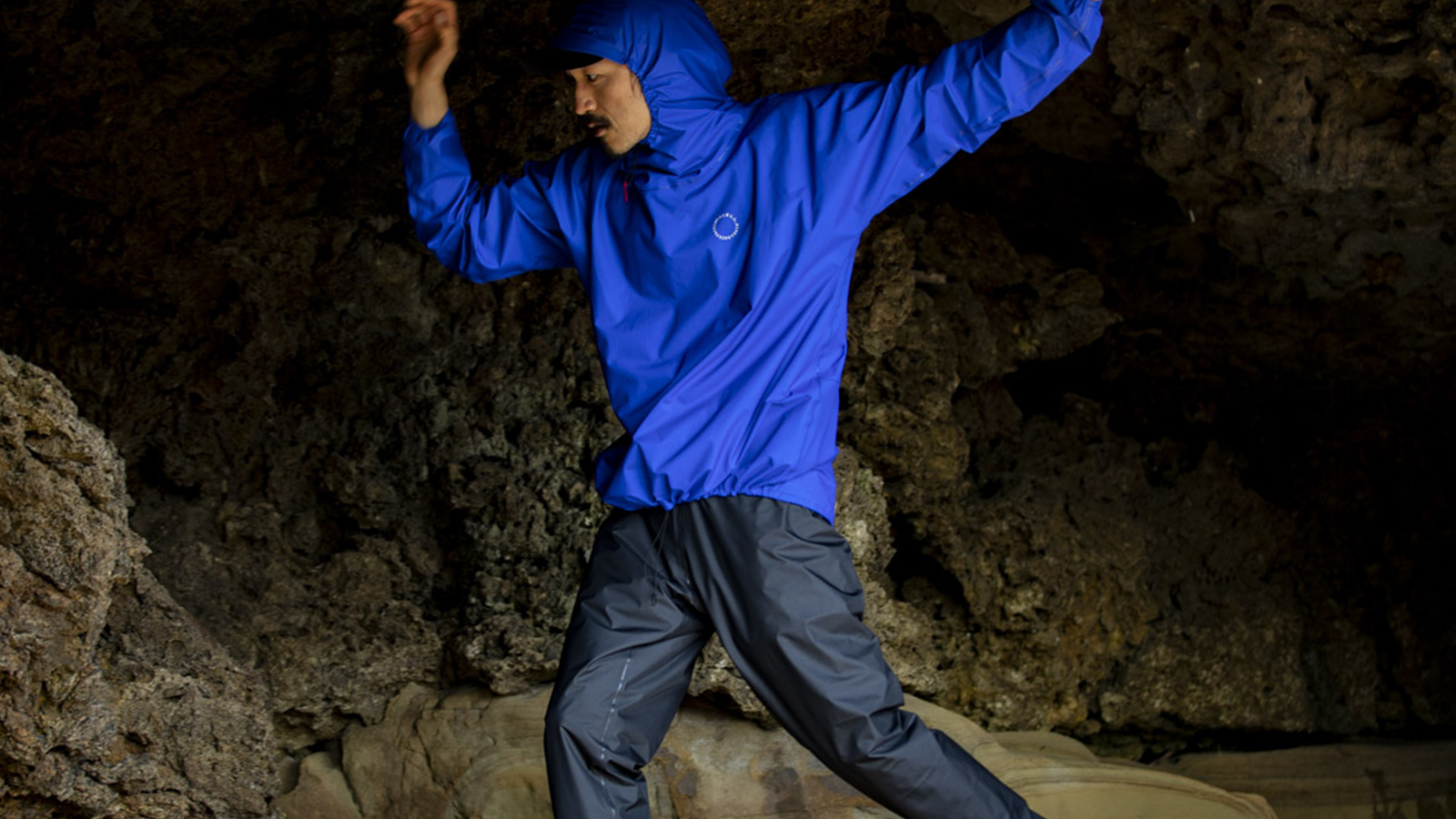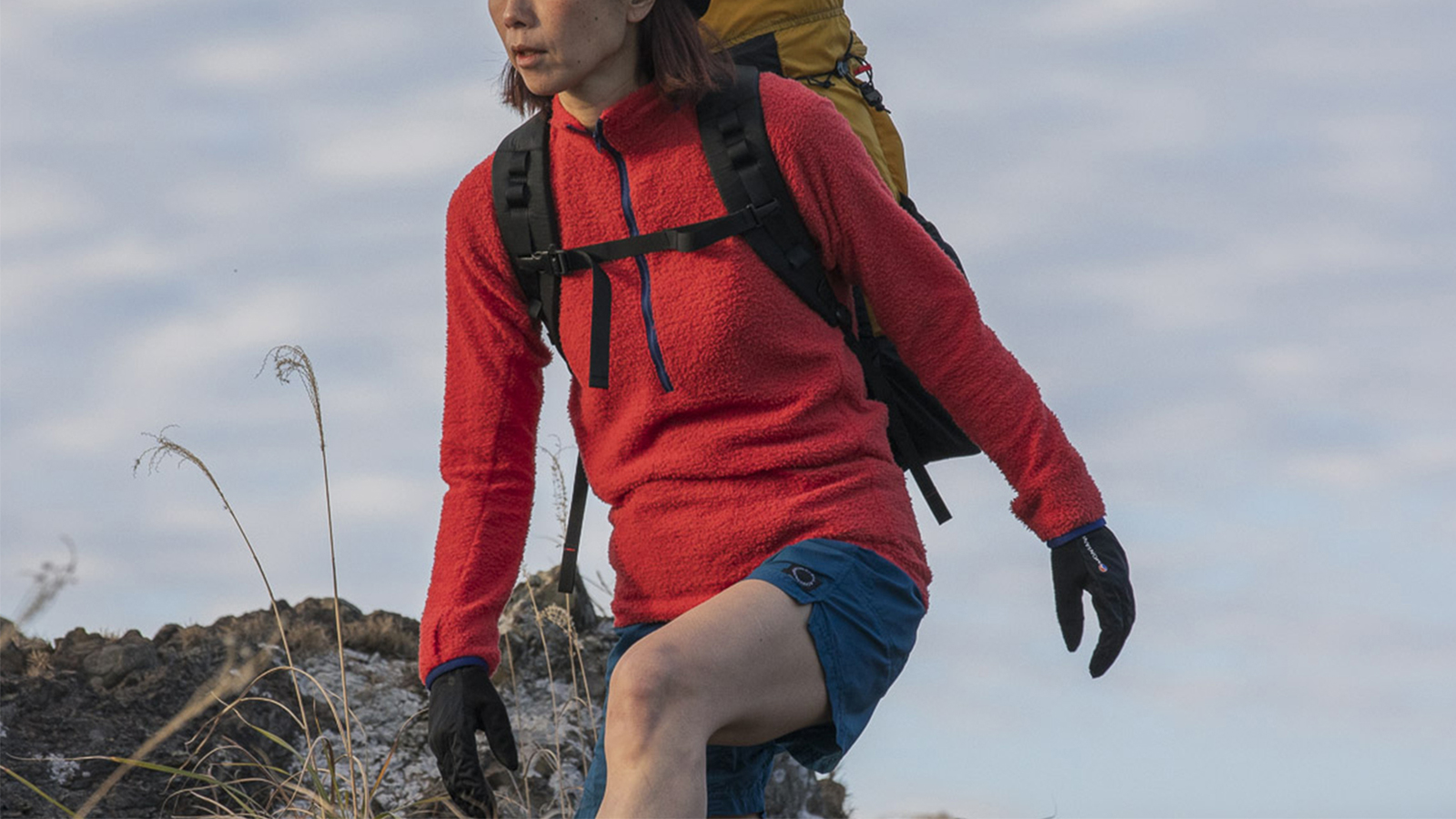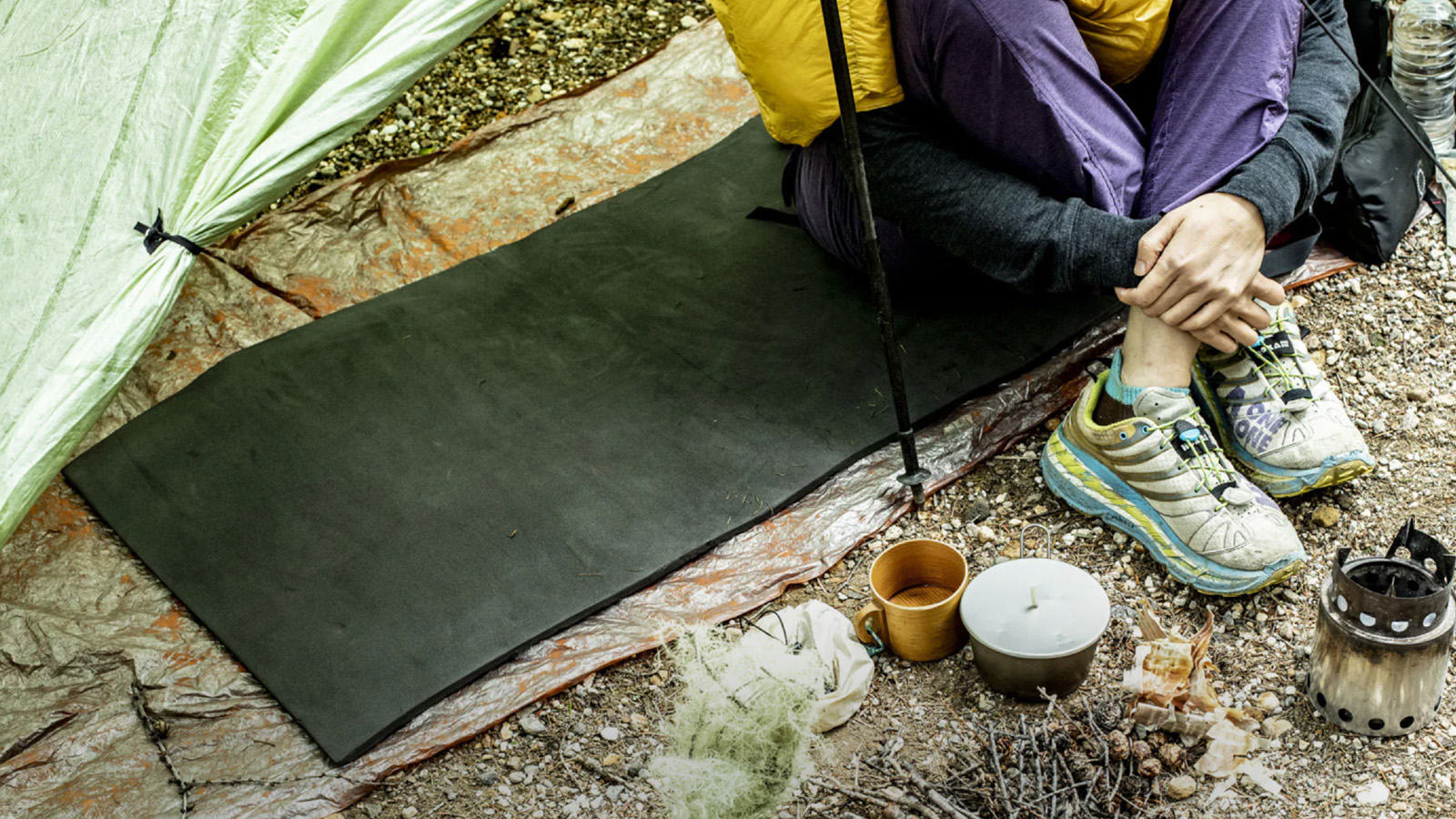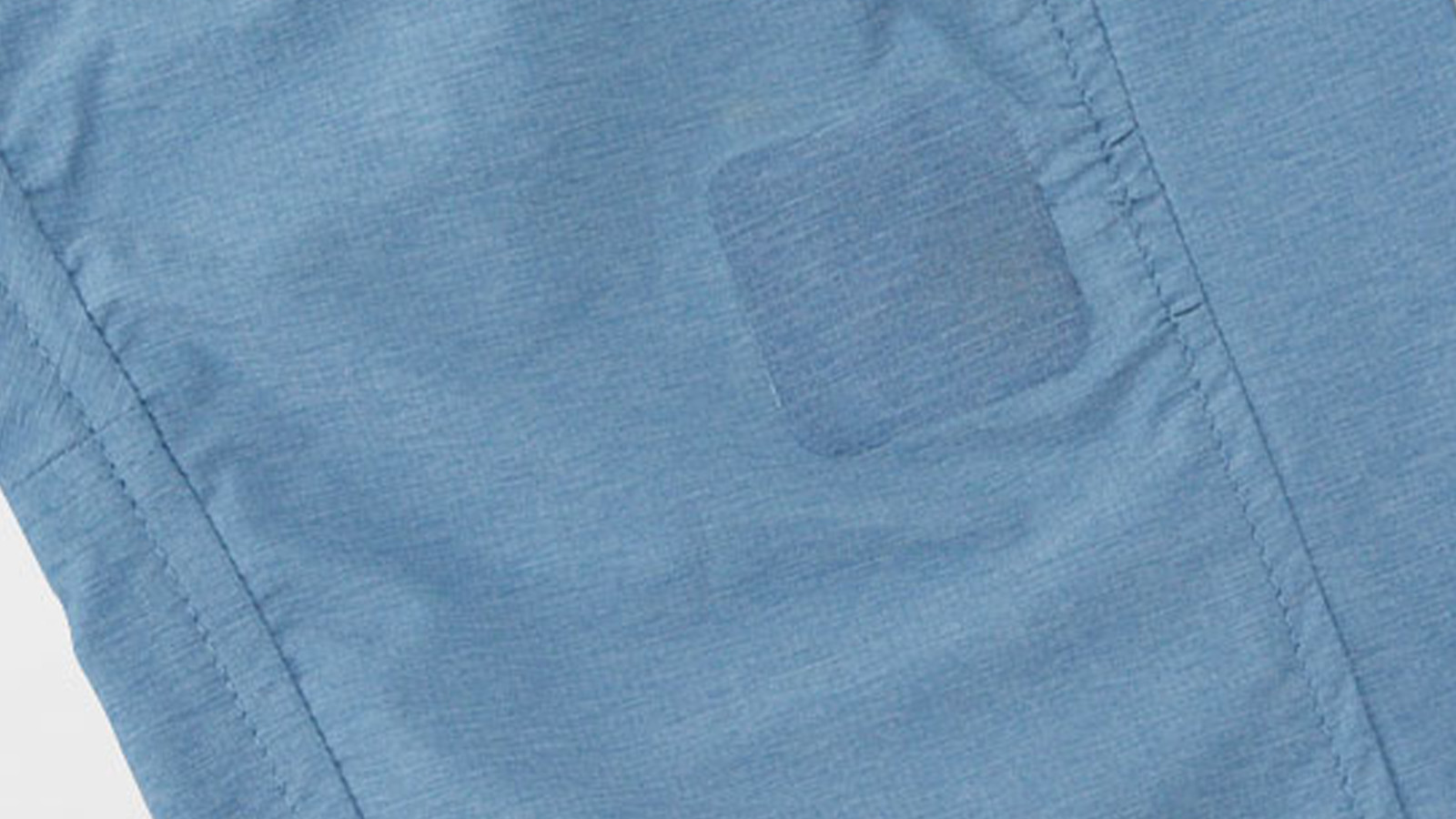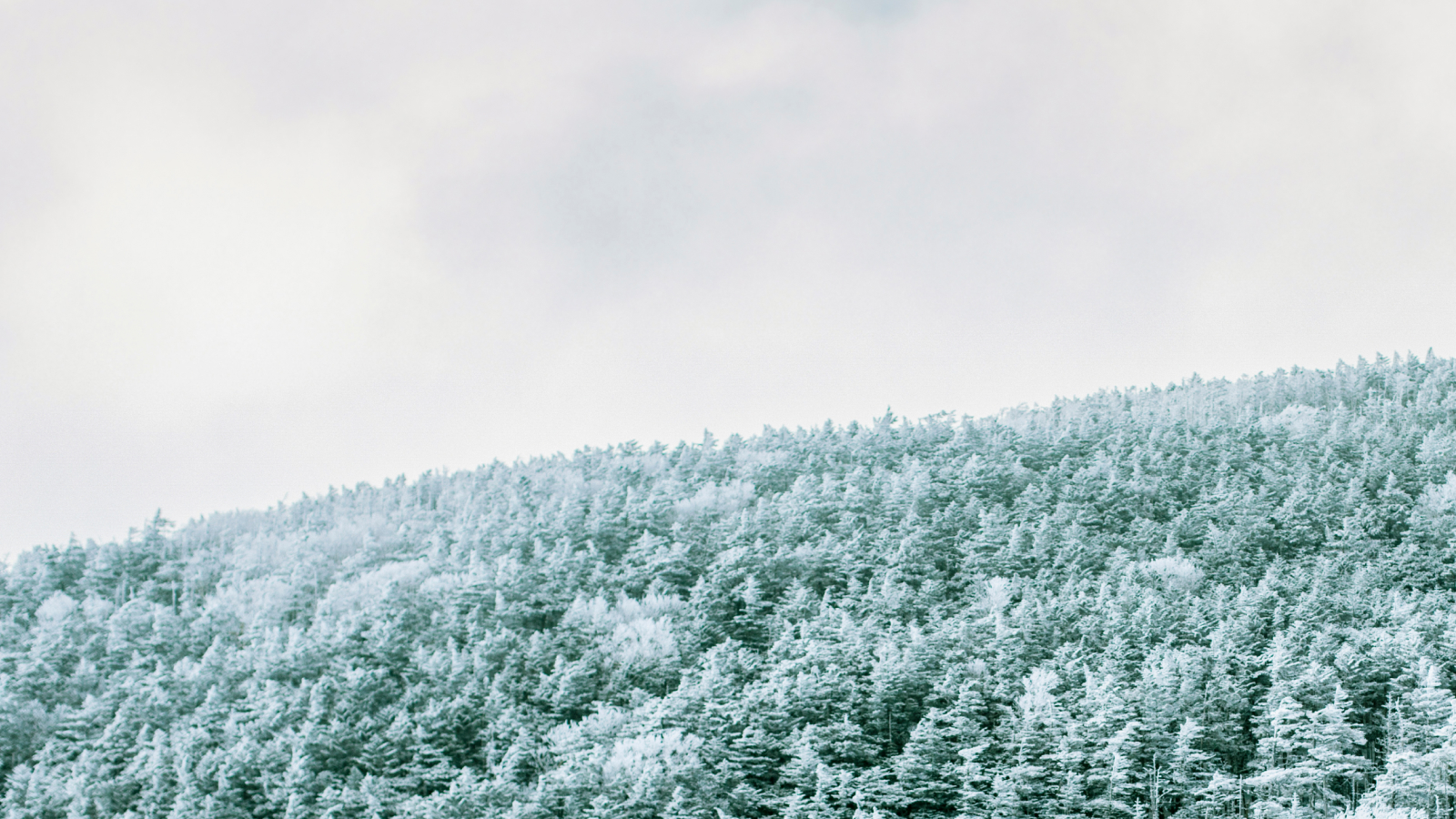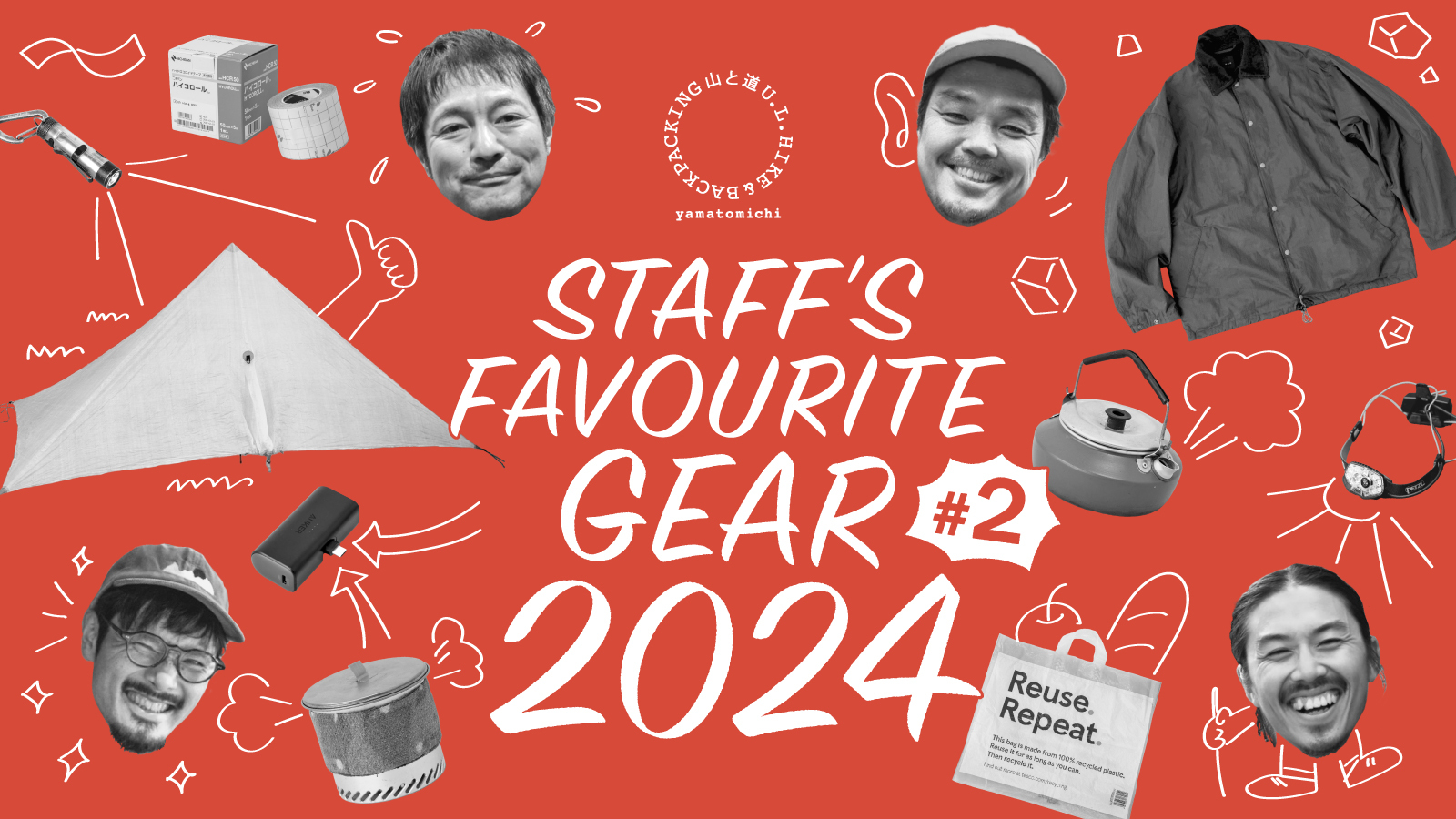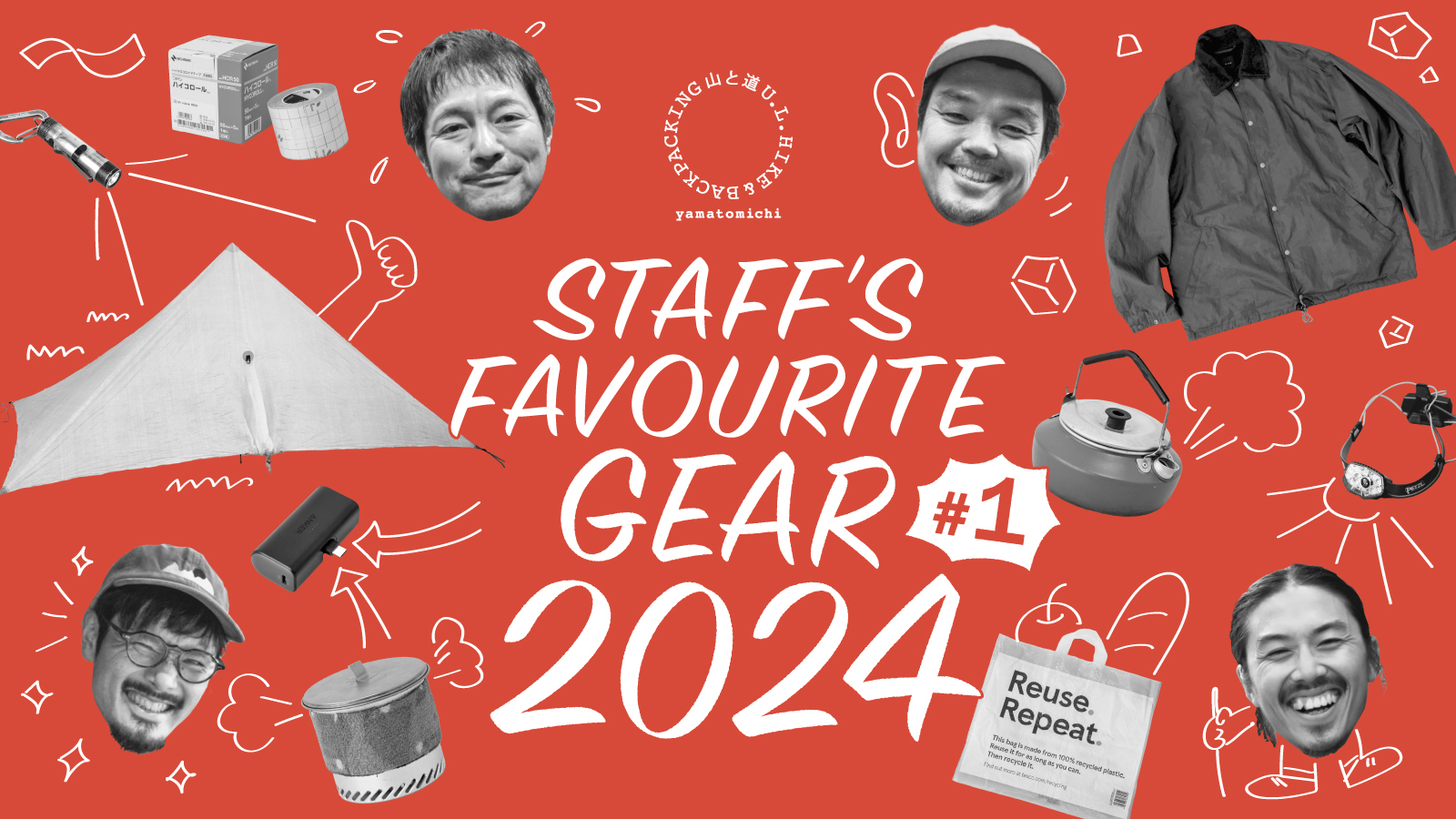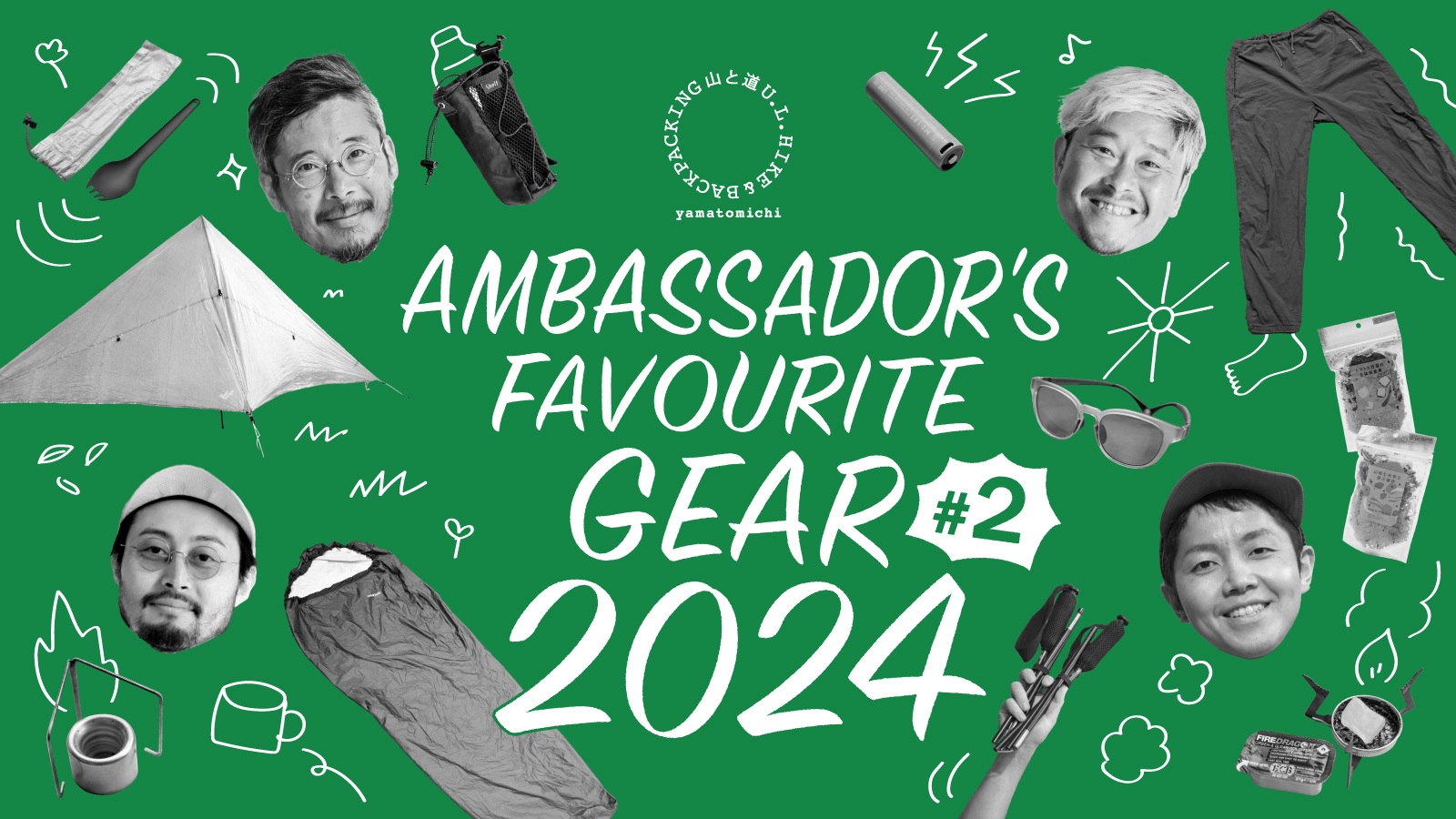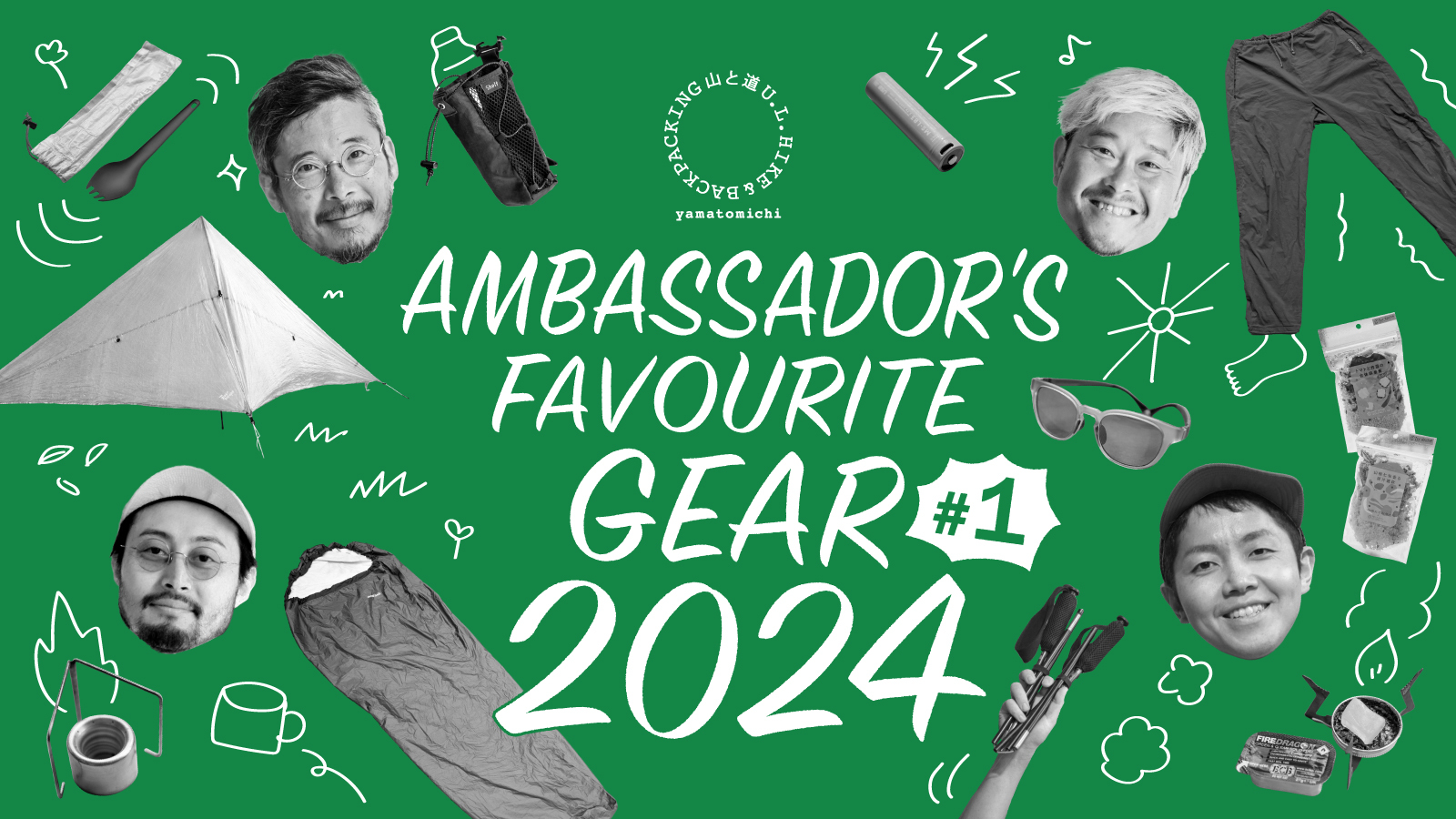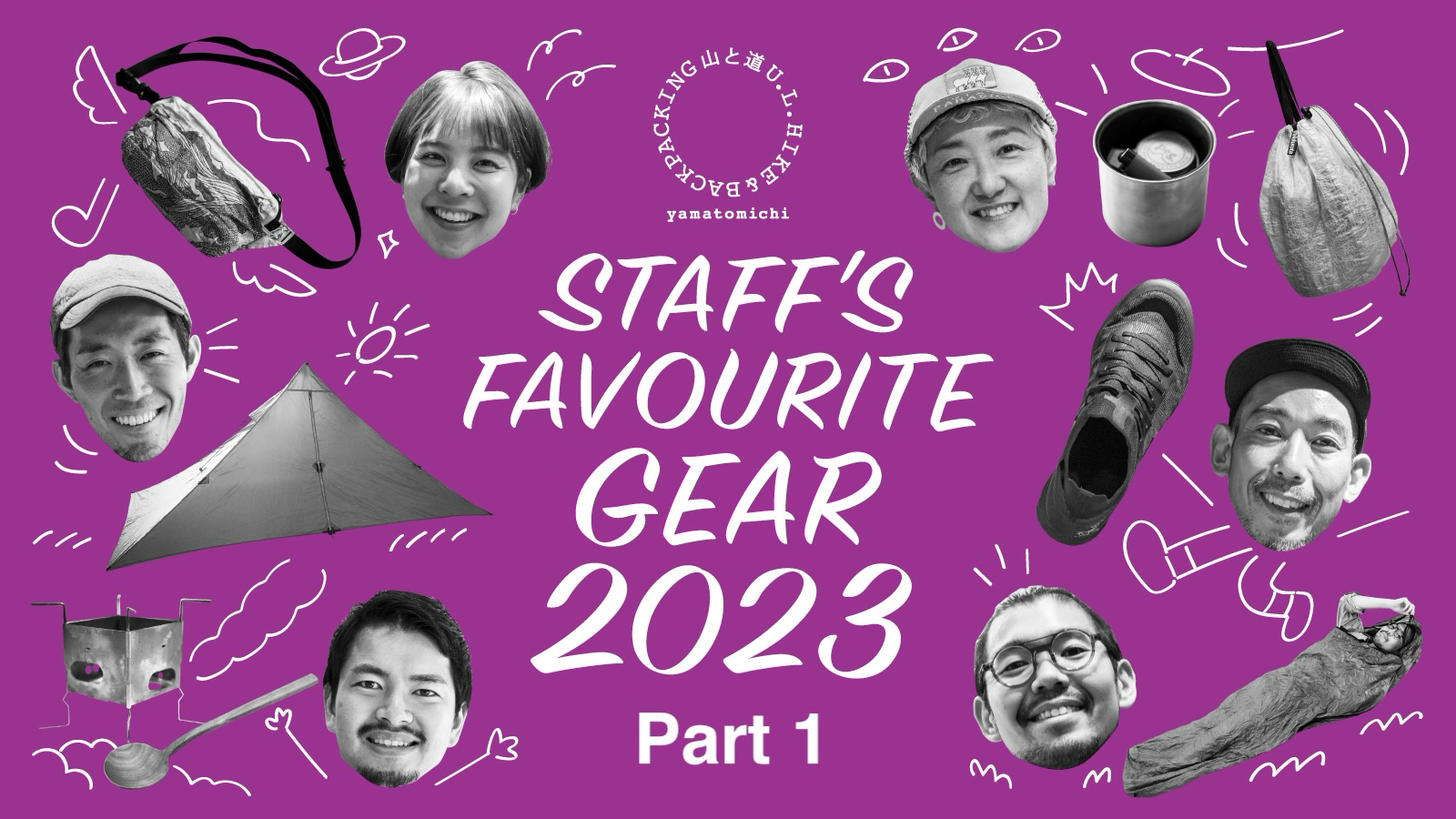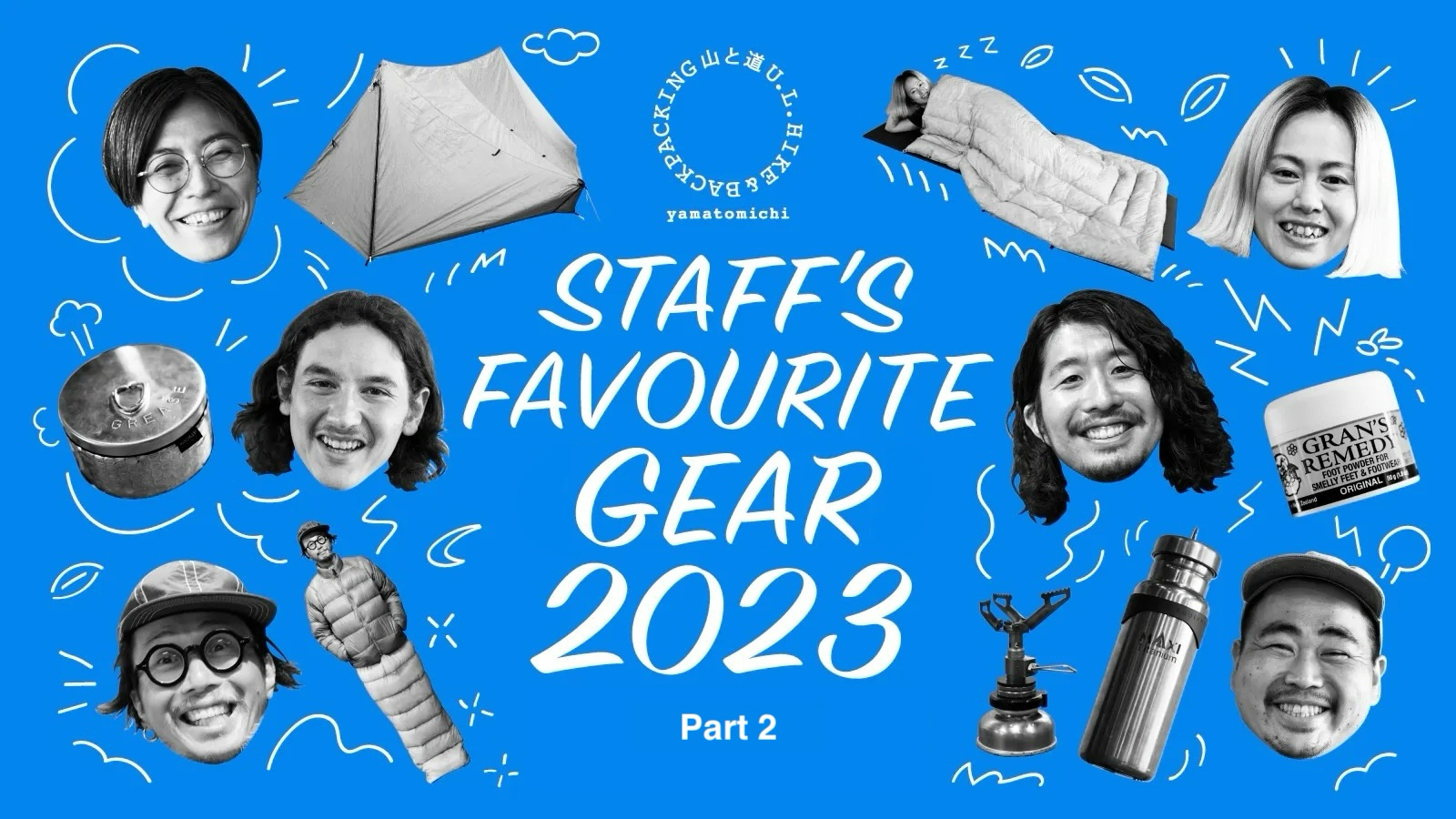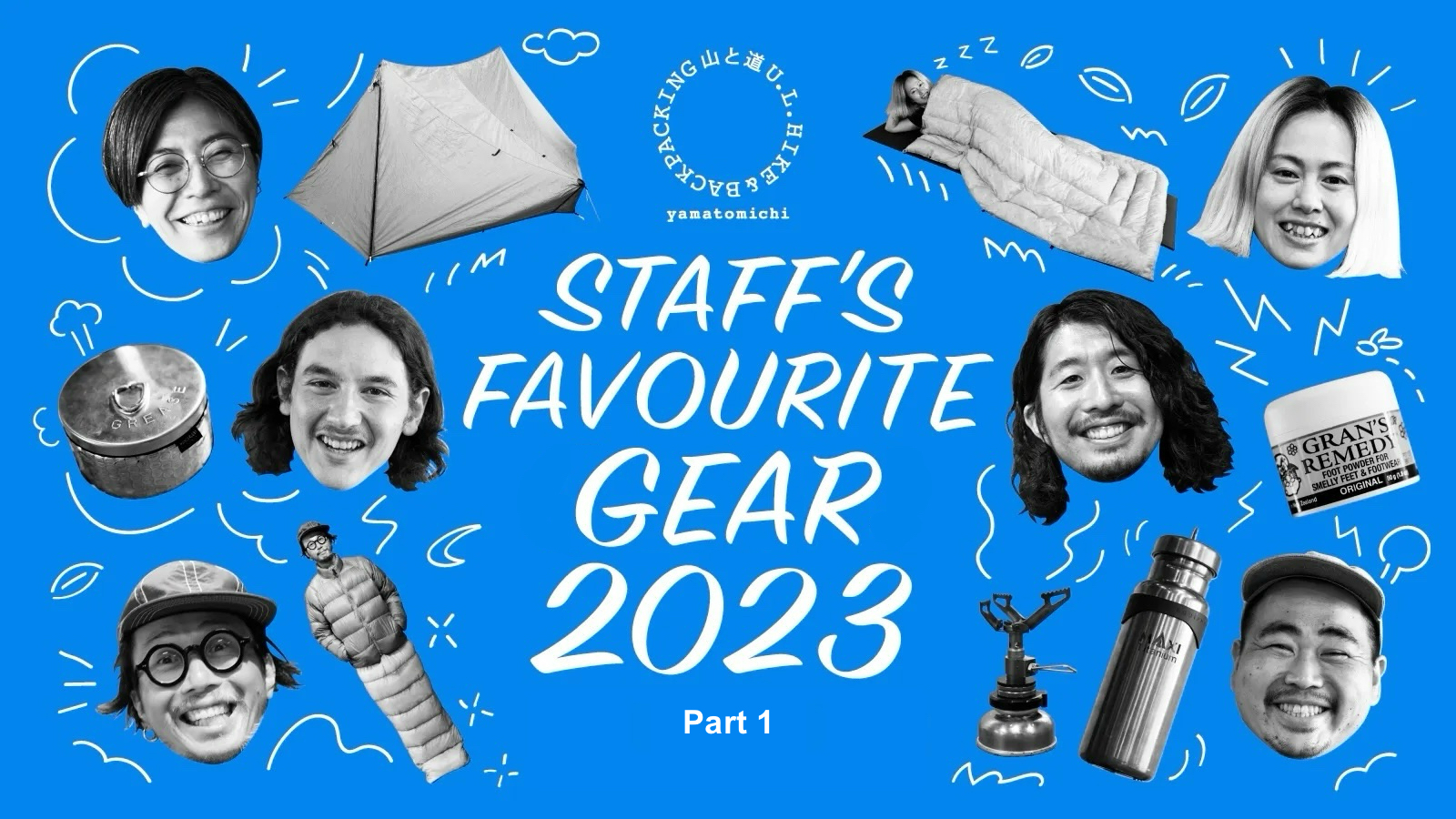Yamatomichi Kamakura Shop Staff #2
Support: Seimi Rin
Yamatomichi Kamakura Shop Staff #2
Support: Seimi Rin
In the hiking community, there are plenty of gear nerds who love to talk about their stuff. Yamatomichi employees are no exception. Recently, we asked the staff at Yamatomichi Zaimokuza in Kamakura and Yamatomichi Kyoto to tell us all about the things they can’t do without on the trail. Our employees aren’t all seasoned ultralight hikers. Some are long-trail thru-hikers; others are outdoor novices. For the first installment of this two-part series, Yamatomichi Journals’ Masaaki Mita gets the lowdown from three members of Yamatomichi Kamakura’s staff: Yuko Tsunoda, Yuhi Yokoi and Oji Sonoda.
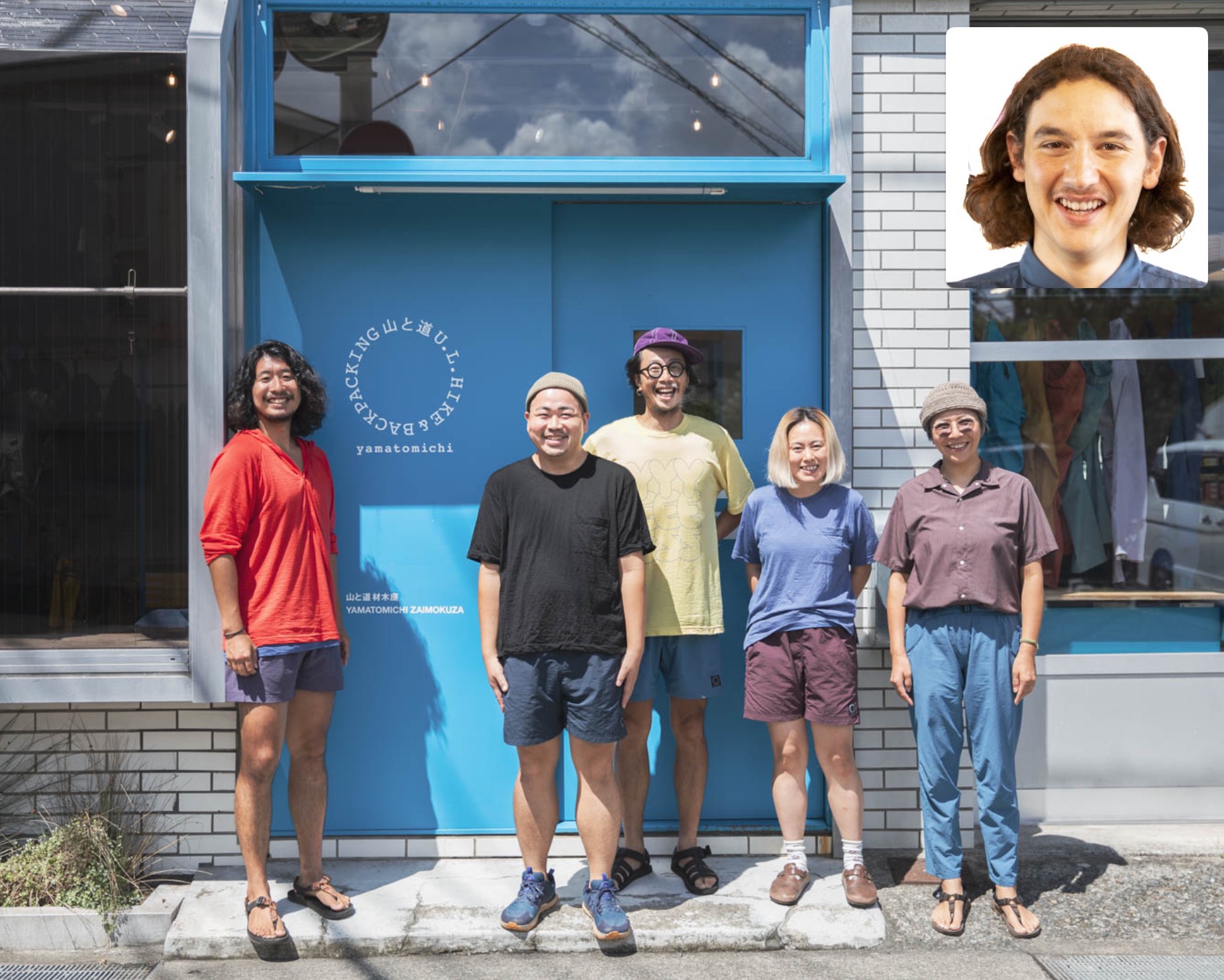
Yamatomichi Zaimokuza’s staff (L to R): Hidenori Maehara, Yuhi Yokoi, Oji Sonoda, Ayumi Uesugi, Yuko Tsunoda, and Stephen Moss (top right).
Yuko Tsunoda’s Gear Recommendations

Yuko Tsunoda was born and raised in Odawara, Kanagawa prefecture. She began hiking in the mountains in her twenties, and was so taken by the Northern Alps that she decided to work at a mountain lodge. Later, she worked at a mountaineering equipment store and eventually joined Yamatomichi. She discovered the joy of walking long trails in the Himalayan mountains of Nepal and on the Camino de Santiago pilgrimage trail in Spain. Her dream is to spend as much time on mountain trails in Japan and to travel the world with her backpack-loving husband.
Long Walks Over Mountain Peaks
Q: Introduce yourself, please.
YT: I’m Yuko Tsunoda. I work at Yamatomichi Zaimokuza. I started here in August, 2022, but I’ve used Yamatomichi gear for about a decade.
Q: You’ve been around since Yamatomichi’s early days.
YT: The first thing I bought was a sacoche. Then I bought the 5-Pocket Pants because the pockets were so great, and after that I immediately got the 5-Pocket Shorts. My collection grew from there.
Q: You’ve been climbing mountains for a while.
YT: About 16 years. For the first three years, I didn’t have much endurance, so I went on day trips to nearby or low mountains. After that, I started heading to the Northern Alps and other taller mountains.
Q: What do you like to do in the mountains?
YT: I enjoy traversing. I feel that long trails really suit my style. I’m thinking of saving money and finding the time to go on long treks.
Q: You prefer long walks over climbing peaks.
YT: That’s right. I prefer to walk for long periods. It doesn’t matter whether it’s a mountain or a city. I just enjoy walking.


Q: Walking is fun, even when you’re not heading deep into the mountains. What are some places you’ve walked?
YT: The Michinoku Coastal Trail (a 1000-km route in Japan’s northeastern Tohoku region) was perfect for me. Entering trails where you don’t meet people, finding small shops along the way, talking with the elderly shop owners, and then heading back to the mountains –– it felt like a journey, which I loved.
Q: It’s like traveling along the boundary between the inhabited and uninhabited worlds.
YT: Exactly. It felt balanced and comfortable going back and forth between the inhabited and uninhabited worlds. It suited me better than being only in the mountains.
1. DCF Sacoche (DIY)

Q: Let’s talk about your favorite gear. The first one is this MYOG sacoche (MYOG, or make your own gear, is another name for DIY equipment).
YT: It’s more of a pouch than a sacoche. This is the improved version. I made my first pouch in a hurry to use at the Yamamichi Festival in June, where everyone was participating in the bon-odori (Bon dance). I wanted to drink beer while dancing, but I didn’t want to have to hold it. I needed a pouch just big enough for my beer and cigarettes. The first one was too small to fit both. For this second version, I wanted it to be big enough to hold snacks while I was hiking and my cigarettes and wallet at a campsite and necessities to buy beer at the mountain cottage.
Q: Your first version had a pocket, but your second version didn’t.
YT: I realized that one pocket was enough, so the second version is a simple bag. For the shoulder strap, I took one from the Wanderlust Equipment Khampa La Pack that I’d been using.

Q: You’ve adapted it to allow for strap length adjustment.
YT: Yes, the shortest distance to get snacks into my mouth.
Q: This size might actually be great. It could sell pretty well if you marketed it. There aren’t many small ones like this.
YT: Exactly.

Q: There’s the Happy Hour Beer Sacoche, but that’s very specialized. I think the size of yours is good. The quality has improved a lot from the first to the second version.
YT: If you look inside, the stitching is crude. If professionals saw it, they’d probably think, “Yikes.” But I’m an amateur, so it’s passable.
Q: You’re fond of your own creation.
YT: I’ve become fond of it, and I plan to keep using it.
2. MYOG Headlamp Belt
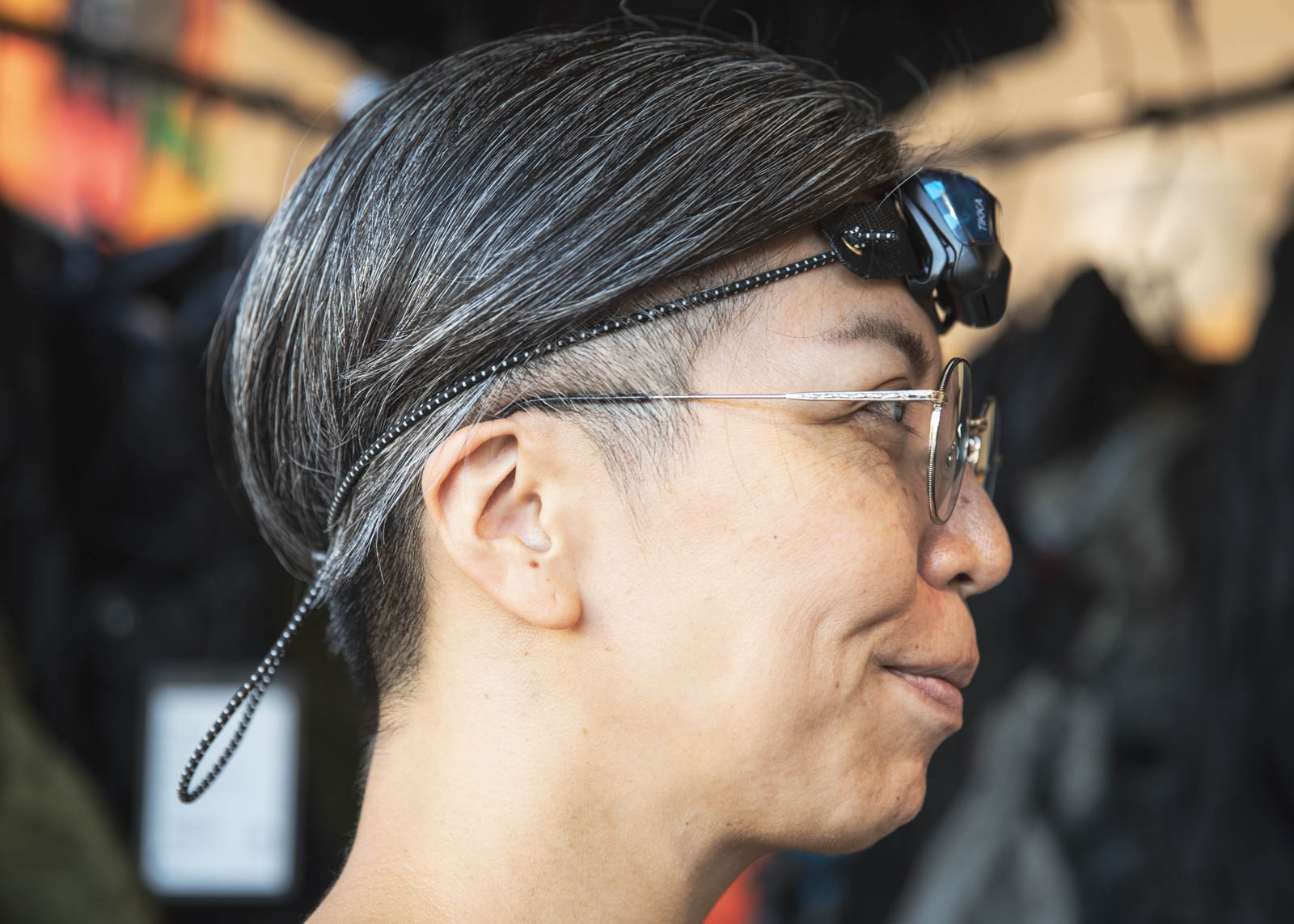
Q: Next up is your headlamp strap. This is also MYOG.
YT: That’s right. The reason I made this was that the manager at Zaimokuza, Hidenori Maehara, once told me that he thought the headlamp strap was heavy.
Q: Headlamp straps are heavy. Or rather, they’re bulky, which is annoying.
YT: Exactly. After removing the strap, I was worried about just having the elastic, but I cut it anyway. Then, once I threaded the elastic through, it was incredibly unstable. I wondered if I’d made a mistake.
Q: This won’t do…
YT: I was wondering what to do. I’d already cut it, so I felt like I’d wasted it. But then I happened to see a headlamp strap on LUNETTES’s Instagram account. It was exactly what I was looking for. I also thought that I could make my own, so I headed over to craft and hobby shop Yuzawaya.

Q: You didn’t buy it from LUNETTES?
YT: Sorry. I was amazed at how creative some people are and felt a bit frustrated with myself for not coming up with my own ideas. Then I hammered in the eyelets, and once I did that, the whole thing became very stable. It was lightweight, and that for me was a lifesaver. If I hadn’t found this, I probably would have bought a new headlamp.
Q: That’s great to hear.
3. DF Mesh Merino Crew Neck
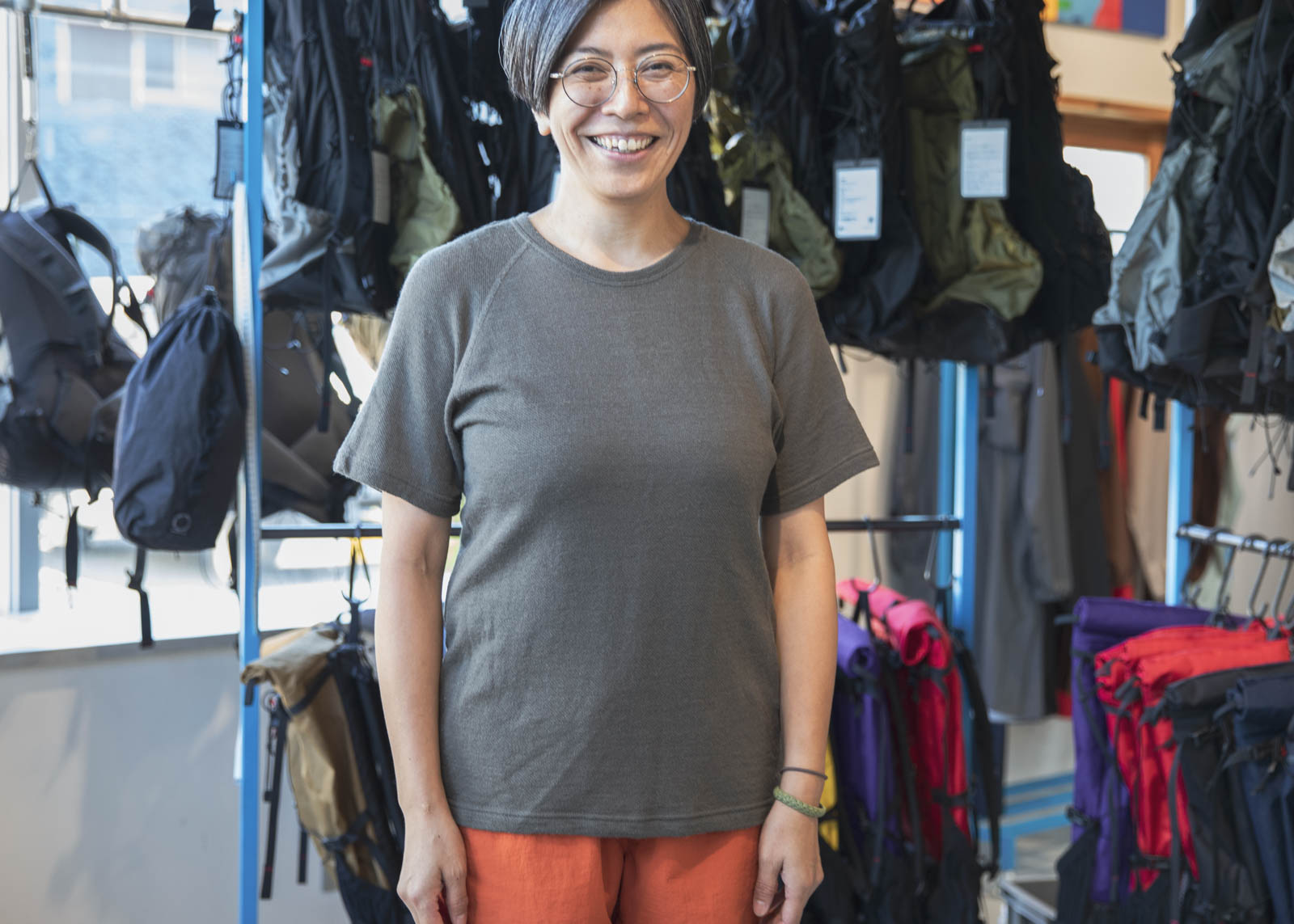
Q: Next up is something from Yamatomichi.
YT: Yes. The Yamatomichi DF Mesh Merino Crew Neck. I love the entire DF* Merino Mesh series, not just the crew neck. The way it lets the wind through is amazing! When it first came out in the 2022 fall/winter season, I often wore the DF Mesh Merino Sleeveless as an inner layer, so I didn’t notice how well ventilated it was. But when it got warmer and I started wearing it alone, I could really feel the wind, and thought it was fantastic. Feeling the wind is so refreshing, don’t you think?
*DF stands for “double face”, which describes the fabric’s hydrophobic inner surface that wicks moisture away and the hydrophilic outer surface that absorbs the released sweat, keeping your skin feeling dry.
Q: The feeling of the wind passing through your clothes.
YT: Yes, you can feel that sensation across your whole upper body, which makes you feel connected to nature. It’s definitely one of my top picks when I head into the mountains. Plus, it dries quickly, which is another great feature.

Q: There are various types of DF products, like long sleeves, hoodies, and sleeveless, but you like the crew neck best?
YT: In early fall, long sleeves are too warm. I use this one the most. The structure of the material is such that it tends to pill and holes can open up.
Q: But holes don’t develop as easily as I’d assumed. It is Merino, and to some extent, it’s unavoidable.
YT: This being mesh, some pilling is inevitable. Other Merino items also develop holes.
Q: But if you’re heading to the mountains, this is what you’d wear, right?
YT: Yes, lately, I’ve been wearing this almost exclusively.
4. Linden Pouch Container 200 ml

YT: The next item is a bit ordinary: Linden’s 200 ml pouch-container.
Q: This is for carrying alcohol fuel?
YT: Yes. Many bottles similar to this can’t hold alcohol, but this one can. I often find alcohol bottles are either too big or too small for my needs. 200 ml is too much, but 100 ml can sometimes be too little. Carrying two 100ml bottles is bulky, and 200 ml is cumbersome. When I need more than 100 ml, I end up not taking the alcohol stove.
Q: How many milliliters is this?
YT: This one is 200 ml. When I don’t want to bring 200 ml but need more than 100 ml, this is perfect. It’s compact and lightweight, and doesn’t take up much space. It can also be used for carrying a bit of alcohol for drinking, not just fuel. And it’s ¥900 for three! Not bad, right? There’s also a 100 ml pouch.

Q: Does this brand make alcohol fuel?
YT: Yes, Linden does. (Linden is produced by Tokyo-based Iizuka Co. Ltd.)
Q: So, they made the pouch-container themselves.
YT: That’s right.
Q: It would be even better if it had measurement markings.
YT: That’s a drawback of using these pouches. It’s good to check how many milliliters the cap holds.
Q: If you’re using the same alcohol stove regularly, you can usually eyeball the amounts.
YT: But because this pouch is so plain, I want to make it cute by decorating it with stickers! And apparently, it can be frozen. You can freeze liquids, gel drinks, sauces, and even shampoo. That can be handy.
5. Iwatani I-Wrap

YT: Finally, my last recommendation is very ordinary: Iwatani’s i-Wrap.
Q: I’ve always been curious about this whenever I’ve seen it at the supermarket. I’ve never used it, though.
YT: I started using it about a year ago. You can put it in the microwave or fill it with hot water. It’s super convenient. I always felt that the packaging for instant rice got in the way. Then, I realized I could just put it in this.
Q: You can fill a single bag with hot water?

YT: Yes. When I transfer the instant rice to one of these, I write down what it is and how much hot water to add. I only need to add water. So far, it hasn’t torn. Sometimes, I use it as is, or I keep refilling it. Itt’s much lighter, takes up less space, and significantly reduces the amount of trash. And it can also double as a trash bag.
Q: It seems perfect for carrying the contents of cup meals. I sometimes put vegetables that I buy at the supermarket into the thin plastic bags that they provide for you, and I use these to carry the contents of cup noodles or cup meals when I’m traveling.
YT: Ideally, I want to eat delicious food while I’m in the mountains. I’m surprisingly okay with instant rice—it goes down without any problems. I tell myself that I’ll eat something tasty once I’m out of the wilderness, and I can easily get by on instant rice.

YT: Yes. When I transfer the instant rice to one of these, I write down what it is and how much hot water to add. I only need to add water. So far, it hasn’t torn. Sometimes, I use it as is, or I keep refilling it. Itt’s much lighter, takes up less space, and significantly reduces the amount of trash. And it can also double as a trash bag.
Q: It seems perfect for carrying the contents of cup meals. I sometimes put vegetables that I buy at the supermarket into the thin plastic bags that they provide for you, and I use these to carry the contents of cup noodles or cup meals when I’m traveling.
YT: Ideally, I want to eat delicious food while I’m in the mountains. I’m surprisingly okay with instant rice—it goes down without any problems. I tell myself that I’ll eat something tasty once I’m out of the wilderness, and I can easily get by on instant rice.
Yuhi Yokoi’s Gear Recommendations

Yuhi Yokoi. Born in Gifu Prefecture, Yokoi is known as “Oden-kun”. He grew up helping his grandparents grow rice and shiitake mushrooms. He loved fishing in rivers and the ocean, but didn’t venture into the mountains much until he was in his mid-thirties. His excitement for the mountains was rekindled on a hiking trail in Kamakura. Since then, he has balanced his enthusiasm for hiking with the reality of his physique, and he is now on a mission to make both body and gear ultralight.
Ultralight Conversion of Body and Gear
Q: Please introduce yourself.
YY: My name is Yuhi Yokoi, AKA Oden-kun. I work at Yamatomichi Zaimokuza.
Q: Why do people call you Oden-kun?
YY: There’s a character called Oden-kun in a manga by Lily Franky. Apparently, I look just like the character so people started calling me that. My other nicknames are Meat Captain and Sanpei.
Q: You definitely have a unique look. How long have you been at the Zaimokuza store?
YY: Since July, 2023.
Q: How long have you been hiking?
YY: Not very long. I suddenly got into hiking in December of 2022, and started doing day hikes to low mountains around the Kanto region. I’ve gone out almost every weekend since then.



Q: How did you get into hiking?
YY: My original hobby was fishing but during the off-season in the winter I had free time. My wife suggested we try walking the hiking trails around Kamakura. I wasn’t too keen at first, but once we started walking, it felt amazing. The experience brought back memories of helping my grandparents with their work in the mountains, and I felt incredibly refreshed both mentally and physically. I had lived in Kamakura for about five years before that but had never walked those trails. I wondered why I hadn’t tried such a fun activity so close to home
Q: Now you live in Samukawa, in Kanagawa prefecture, right?
YY: Yes. I would travel from Samukawa to Kamakura for the hiking trails. I initially bought standard beginner hiking gear, like mid-cut shoes and a fleece. But it was heavy and uncomfortable and just didn’t feel right.
Q: Is that how you discovered ultralight hiking?
YY: When I was living in Kamakura, the Yamatomichi factory was nearby, so I was aware of ultralight gear and Yamatomichi. I realized that I should shift to ultralight hiking and leaned more toward that direction.
Q: And then you applied to Yamatomichi and got a job unexpectedly?
YY: Unexpectedly. The job posting specified at least a week of hiking experience. I was actually planning to apply in 2024 after gaining more experience and losing some weight.
Q: You thought it was too soon for you.
YY: Yes, I was aiming to apply in 2024 so I could improve my hiking skills and go on a diet. But I applied impulsively anyway.
Q: And they liked your character and hired you.
YY: Exactly. So here I am, driven by that initial impulse. But I’m still very inexperienced, so I hope to learn from my colleagues and get more experience.
Q: Let’s talk about your gear recommendations!
1. Evernew Ultralight Pan #18

YY: The first item is the Evernew Ultralight Pan #18 cm. It now seems to be called the Evernew UL Alu. Pan 18 cm. Since I mostly go on day trips to low mountains, my pack weight is quite light to begin with. Because I love eating, I prioritize food quality over weight reduction. I chose a pot with an 18 cm diameter, a capacity of 1200 ml, and a weight of 152 g. It can cook for two people, or make a hearty meal for one. I typically use it to make the kind of potent ramen you’d eat at Ramen Jiro (a Tokyo-based ramen chain) with char siu or braised pork, store-bought cut vegetables and ramen noodles. It’s incredibly delicious eating this in the mountains.
Q: Pans are not common in the ultralight community, where reducing weight is the priority. But they really expand your cooking options. You can make stir-fried dishes or grilled meat, for example.
YY: Yes, the sizzling sound attracts attention, and many older hikers and other climbers often talk to me when they hear it.
Q: I once hiked a trail in the US with a group of Korean hikers. The night before the hike, everyone was grilling meat with their pans at the campsite. Koreans like to grill meat even in the mountains.
YY: This pan is made of aluminum, with a honeycomb structure that conducts heat well and heats up nicely.
Q: What’s next?

2. Altra Lone Peak 7 Wide

YY: The second item is the Altra Lone Peak 7 Wide shoes that I’m currently wearing.
Q: A classic.
YY: A true classic. When I first got into hiking, I bought mid-cut hiking boots, but my big toes and knees always hurt. Even walking on paved roads was painful. Around that time, I tried walking in the running shoes I had been using, and it felt incredibly light and comfortable. But, then I had hip and lower back pain.
Q: It sounds like you were in a lot of pain everywhere.
YY: Yes. The shoes weren’t right for me. After some research, Altra seemed to be a good option. I tried them, and although the zero-drop design led to some initial muscle soreness, I no longer had knee, toe or back pain. Even if my feet started to hurt during walks, the discomfort faded away. It feels like they provide a good balance of protection while also strengthening the feet.
Q: Especially with the ones you wear, which are the wide model.

\
YY: Altras are already wide, but the regular width was a bit narrow for me.
Q: Do you have high arches and wide feet?
YY: I have the typical Japanese farming ancestry body type –– high arches and wide feet!
Q: Looking at Altra’s website, there seem to be only two other models that come in extra wide besides the Lone Peak. If even the ordinary, spacious Altras are too narrow for you, this seems to be your only choice.
YY: Losing weight might help a bit, but for now, this is the only option. It’s a bit disappointing that they only come in this blue color. I’d like some more stylish options.
Q: That’s asking too much! You should be grateful enough that Altra comes in a wide model. Otherwise, you’d be stuck without anything to wear on your feet.
YY: I am grateful. They don’t hurt my feet at all, even when running. I’m really fond of them. I think I’ll be sticking with these for a while.
Q: For people with your body type, wide Altras might be a blessing.
3. Gran’s Remedy Foot Powder

Q: What’s the next item?
YY: Continuing with the shoe theme, this is something I’ve loved even before I started hiking: Gran’s Remedy Foot Powder for Smelly Feet and Footwear.
Q: Is this a shoe deodorizer?
YY: Yes. In my previous job at a ramen shop, I wore the same pair of kitchen shoes for 12 hours a day, six days a week. They started to smell really bad. The odor transferred to my socks, which then made my other shoes smell. I couldn’t stop the spread. I was quite worried at the time, and going to places where I had to take off my shoes, like Japanese-style pubs with tatami or sunken kotatsu tables, made me anxious.
Q: You couldn’t stand your own smell.
YY: Exactly. But when I sprinkled a little bit of this magic powder inside my shoes, the smell disappeared and they stayed odor-free for a long time. I finally halted the spread and could confidently go out to Japanese-style pubs again.
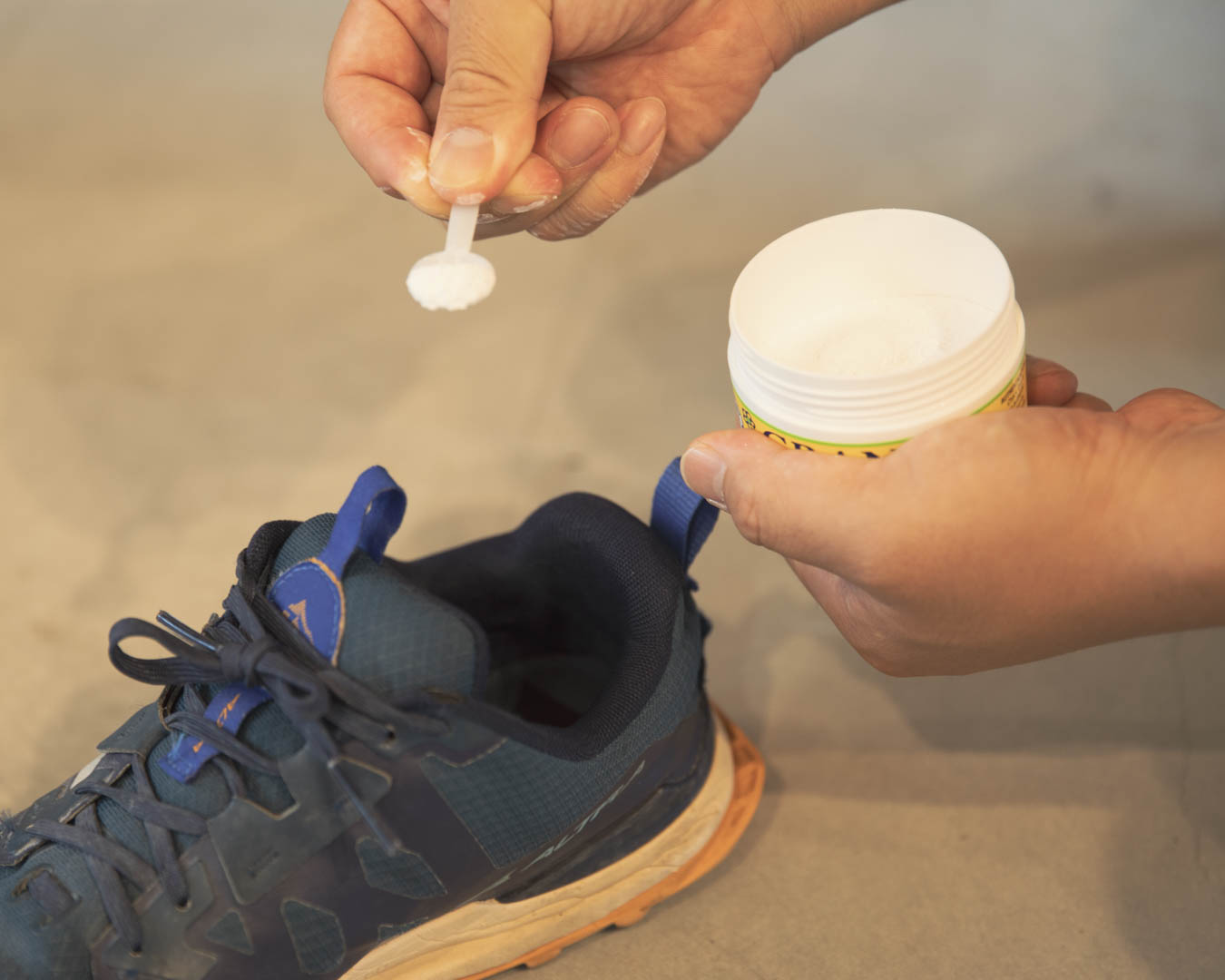
Q: That’s amazing.
YY: My Zaimokuza colleague Ayumi Uesugi also uses this.
Q: You probably shouldn’t share that! Has it completely solved your foot-odor problem?
YY: I think this will be my lifelong companion.
Q: It’s practically your buddy now.
4. Yamatomichi Light Alpha Tights

Q: What’s next?
YY: Next up: Yamatomichi Light Alpha Tights. My wife gave me these as a gift when they came out.
Q: Does your wife also use Yamatomichi products?
YY: Yes. Actually, she was the one who got into hiking first. She thought these tights were interesting and gave them to me as a gift. Initially, I only wore them around the house. But after I got into hiking, I took them along and found that they don’t feel clammy while I’m active and they also keep me warm when I’m taking a break. They’re amazing. I’ve since discovered a few other uses for them. For instance, if my stomach gets cold, I wrap them around my midsection, like a haramaki (belly warmer). Or I can wrap them around my neck, like a scarf.


Q: Wow! I’ve never met anyone who uses them like that. But using them as a belly warmer or scarf makes sense. How did you come up with that?
YY: I didn’t have the Yamatomichi Alpha Haramaki at the time, but since the Alpha Tights are made of the same material, I thought, why not use them as a wrap? It worked incredibly well. The key to using them as a belly band is to tuck the waistband of the tights into your pants. This improves the fit!
Q: I would never have thought of that.
YY: I use a size L Alpha Haramaki, but sometimes it feels tight. Compared to the original Alpha Haramaki, the Alpha Tights fit better and I use them more frequently.
Q: Maybe you should take along three pairs of Alpha Tights: one for your legs, one for your neck and one for your belly!
YY: Exactly.
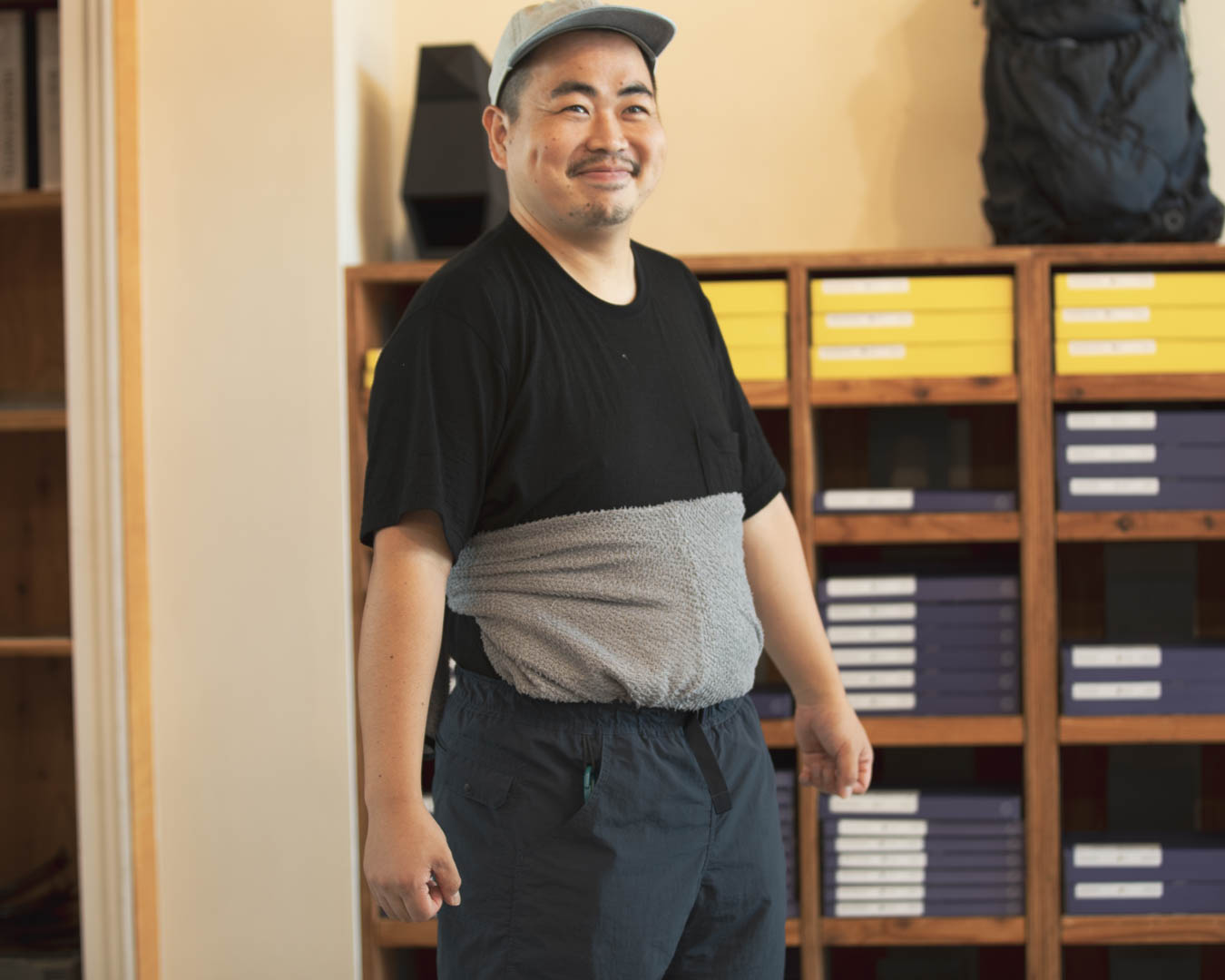
5. Muji Polypropylene Card Case Double
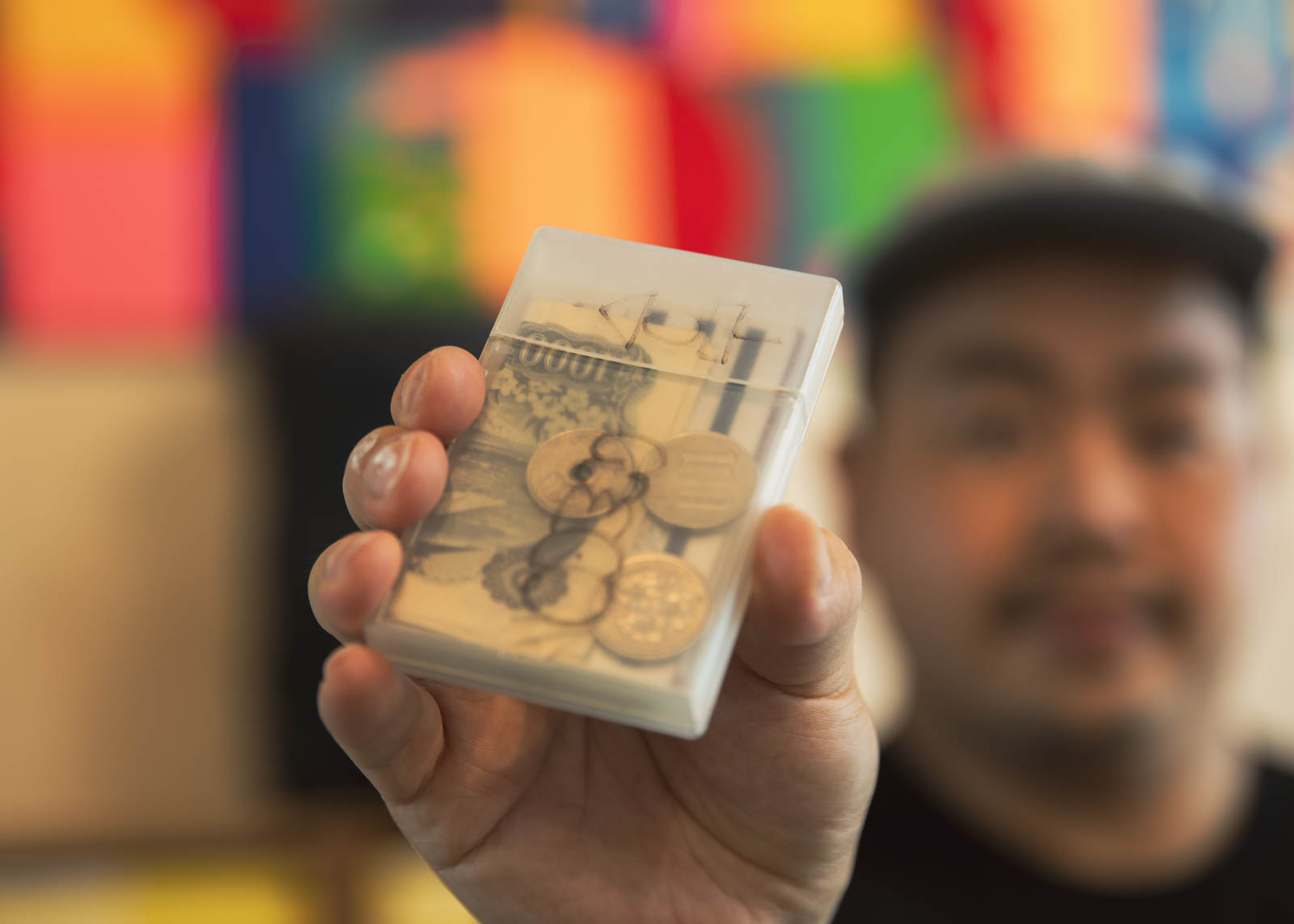
Q: And what’s the last item?
YY: The last item is the Muji Polypropylene Card Case Double. I wanted a light and simple wallet, and I was shocked when I saw on TV chef Remi Hirano using a Ziploc bag as a wallet. I tried that, but the bills and coins kept getting crushed in my pants pocket. I wanted something more durable, and that’s when I found this Muji card case. It fits a minimal number of cards, a few bills, and a reasonable amount of coins. I use it daily for cards and spare bills, and when hiking, I put in extra bills and some coins.
Q: It’s just the right size.
YY: It’s lightweight and durable and won’t break even if it’s in my back pocket and I sit on it. And what’s inside doesn’t get wet if it rains or I sweat. It’s very handy. Being able to see how much is inside is perfect for someone forgetful like me.

Q: Since you’re using a wallet daily, even the smallest annoyance can be a turnoff.
YY: Exactly. Recently, a lot of garage brands have come out with wallets made of X-Pac fabric but I sweat a lot and these kinds of wallets still get wet.
Q: It sounds like you’ve been through a lot. Speaking of Ziploc wallets, I remember hearing that Yamatomichi co-founder Akira Natsume used to make wallets from sealable plastic bags.
YY: That’s interesting.

Q: He used two plastic bags that he cut and fused together with a hot knife to make a double layer.
YY: To separate bills and cards. That’s impressive.
Q: It’s like an evolved version of Remi Hirano’s Ziploc wallet. If you go online and search “Yamatomichi Hiker Wallet” you’ll find an old Yamatomichi blog post from 2014.
YY: Thank you!
Q: I look forward to hearing more of your updates!
Oji Sonoda’s Gear Recommendations

Oji Sonoda. Born in Osaka, Sonoda moved to Kamakura in 2017. After working as a book planner and editor at an art-focused publishing house, he left to become a freelancer. He now works at Yamatomichi Zaimokuza, while also running his own company and taking on editing, agriculture, hunting and other work. He thinks of his hobbies and activities as his mission in life. In 2011, he read author Tomoya Tsuchiya’s Ultralight Hiking and began trying it out. He has since integrated Tsuchiya’s ideas into his lifestyle and his trips to the mountains.
Endless Ultralight Exploration
Q: Please introduce yourself and tell us what you do at Yamatomichi.
OS: I’m Oji Sonoda. My history with Yamatomichi is a bit complicated. I’ve been a staff member at the Yamatomichi Zaimokuza shop since 2022. I started off hiking with and working under an editor at Yamatomichi JOURNALS.
Q: You were working in a different capacity before, but then you got injured in an accident.
OS: That’s right. I took a break after that, but was still occasionally involved. When the Zaimokuza shop was set to reopen, they asked me to help out because they were short on staff, so I came back.
Q: Since then, you’ve been helping with various projects, including HLC.
OS: That’s right. I’ve been involved with Yamatomichi for about five years now. I’m having a good time with everyone here.
Q: How long have you been hiking for?
OS: About 20 years now. I got hooked on ultralight hiking after reading Tomoya Tsuchiya’s book Ultralight Hiking. I read it right after it came out in February, 2011. If I hadn’t come across that book, I wouldn’t have gotten into ultralight hiking. I had thought about trying to lighten my load, but I didn’t know about ultralight hiking until I read that book. It even had website links for overseas garage brands at the end. I looked those up and over time refined my technique.
Q: What’s popular lately?
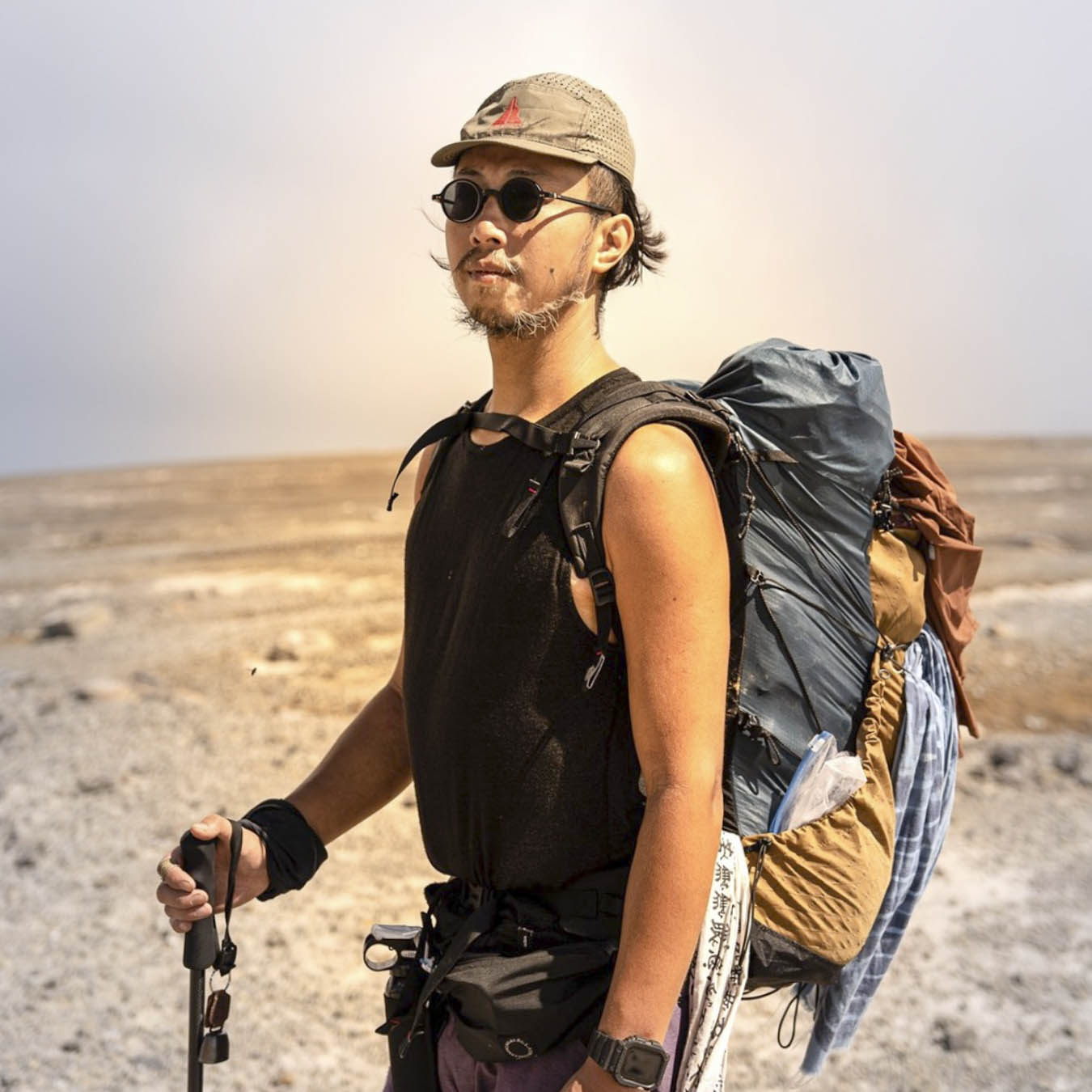

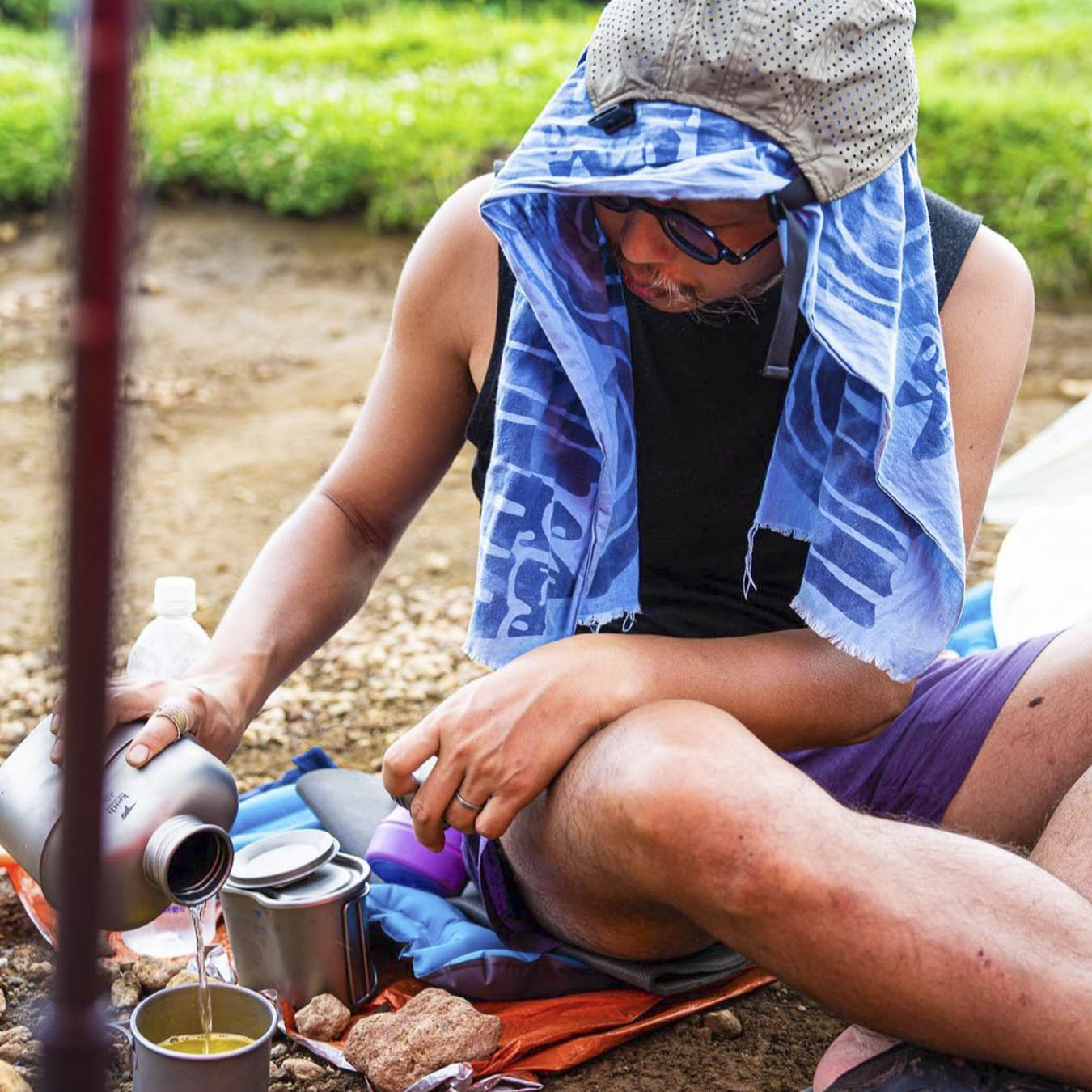
OS: Lately, when I go hiking on my own, I fastpack*. My base weight (the total weight of the backpack excluding food, water and fuel) is around 2.3 kg. For one or two-night trips, I use a hip bag. I sweat a lot, and my back gets soaked from my pack. A hip bag makes a huge difference in comfort.
*Fastpacking is distance trail running and ultralight backpacking combined, and because you’re moving fast and covering long distances, you travel light, carrying just enough of the essentials for several days in the backcountry.
Q: Is the hip bag pretty big?
OS: It’s about 15 L. The one I’m using is well-known and was popular in the US years ago.
Q: Mountainsmith?
OS: Yes! It’s the MountainSmith Tour.
Q: You should have brought it with you!
OS: I thought something more ultralight would be better!
1. Acrima Light Wool Sports Singlet

Q: Let’s take a look at your favorite gear for these extreme mountain trips, starting with the first item.
OS: Recently, it’s the Acrima Light Wool Sports Singlet. This is a base layer.
Q: Is this 100% merino wool?
OS: Yes. The upper chest and neck area are mesh.
Q: Is the mesh part also merino wool?
OS: Yes. It’s a pretty distinctive feature. Usually, if you have mesh, it tends to be a synthetic material. There’s mesh on the back, too, so the part that the pack touches feels like it’s entirely mesh.

Q: Can you feel the ventilation?
OS: Yes.
Q: Does it feel like the wind is blowing through your shirt?
OS: Not exactly. But it definitely lets out the heat and keeps you from feeling hot and stuffy.
Q: What about the material’s drying properties?
OS: The mesh dries quickly. The area on the upper chest where it’s open also helps, since you sweat a lot there. The sweat feels like it evaporates efficiently.

Q: I don’t think I’ve ever experienced that feeling. Is it comfortable?
OS: I’m really enjoying this one right now. I think the Yamatomichi DF Mesh Merino series would be good for winter. But I sweat a lot, so managing sweat is a top priority for me.
Q: You’re burdened by your own profuse sweating. Shall we move on to sleeping gear?
2. Western Mountaineering Hot Sack VBL + Mountain Laurel Designs Quilt
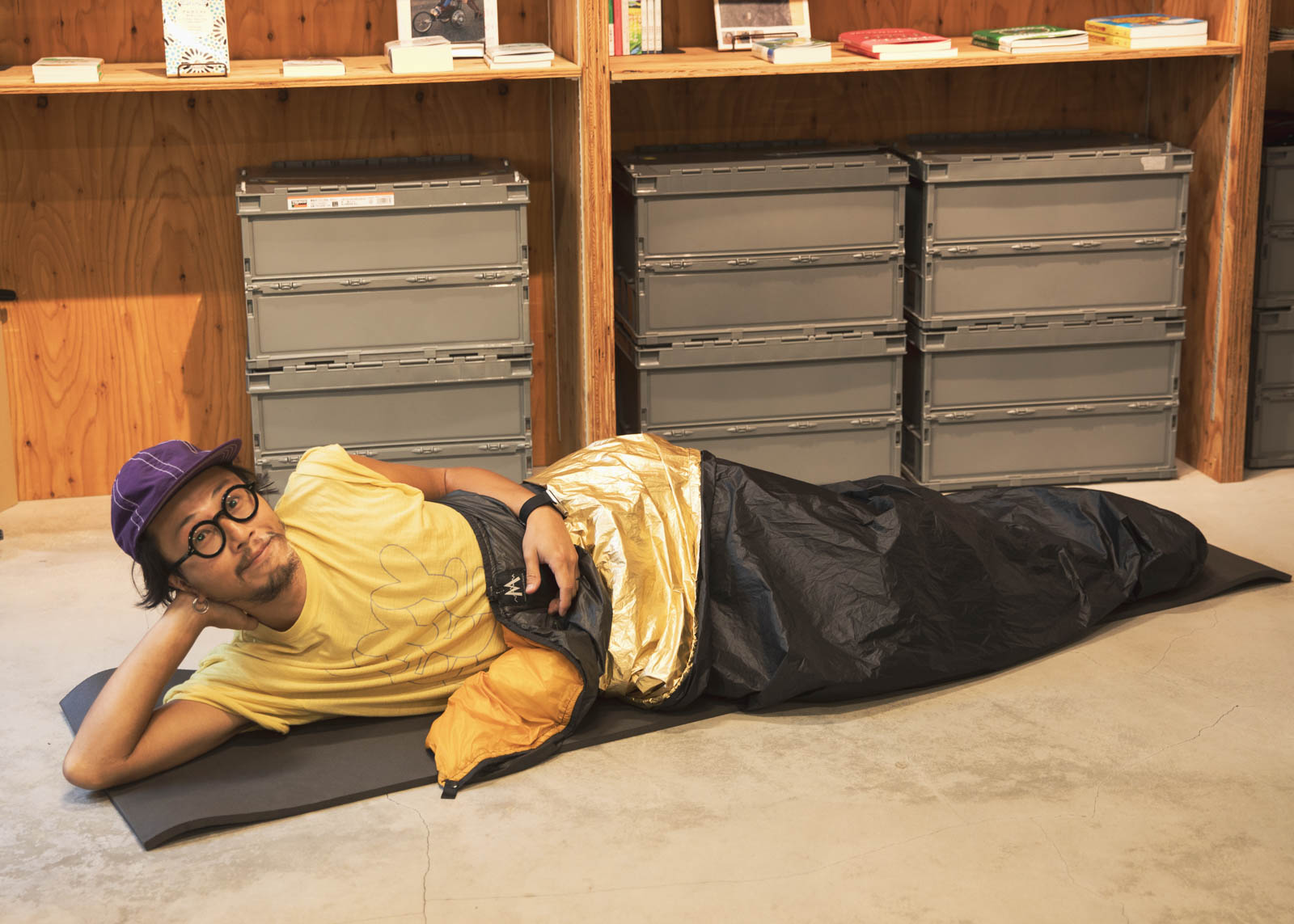
OS: I’d like to talk about my favorite down and synthetic setups. Let’s start off with the synthetic version. It’s a combination of the Western Mountaineering Hot Sack VBL and the Mountain Laurel Designs FKT Quilt.
Q: I thought of Western Mountaineering as a brand specializing in down products, but they also make bivvy sacks. The golden one is the inner layer, right?
OS: Yes. I thought the Hot Sack VBL looked interesting, so I bought it right away. It reflects heat incredibly well and keeps you warm, but it has zero breathability, so it gets really damp inside!

Q: VBL stands for Vapor Barrier Liner, right? It’s a non-breathable material that intentionally traps moisture to maintain heat. This approach was once recognized by people in the ultralight community as a lightweight way of staying warm.
OS: It packs down to an incredibly small size. I think its primarily use is for emergencies.

Q: (While looking at the Mountain Laurel Designs website) Synthetic, weighing between 390 g and 480 g. That’s light.
OS: Yes, it’s light. The weight varies because you can choose different sizes. I think mine is an M. It’s pretty big, and the loft expands easily. You can use it on its own down to around 5 degrees C, but combining it with the Hot Sack makes it even warmer. It traps the moisture, which makes it feel really warm. It’s hard to explain, but you can feel the warmth all over. It’s different from the warmth of down, probably because of the moisture.
Q: The quilt’s surface gets wet, but since it’s synthetic, it retains warmth even when wet. This combination is designed with that in mind. That’s quite a daring approach!

3. Nanga x Sakaiya Elephant Foot Sleeping Bag 100 + Highland Designs Super Light Down Jacket

OS: Next up is the down version of my sleeping setup. I use the Nanga x Sakaiya Elephant Foot Sleeping Bag 100 combined with the Highland Designs Super Light Down Jacket.
Q: Sakaiya made a half sleeping bag (covering only the lower body). Impressive. It’s probably the only one of its kind in Japan.
OS: Yeah, it’s quite rare here. This one is fantastic. The foot box design has extra down, making it really warm. It didn’t come with suspenders, so I added my own. With suspenders, it weighs about 198 g; without, it’s 195 g.
Q: This color is nice, like peach flesh. The red lining and white outer layer create this look.
OS: It’s slightly translucent.
Q: You pair this with the Highland Designs down jacket.
OS: Yes, I bought an old model on sale at the recent Off The Grid event. The jacket weighs about 250 g. The bag and jacket together weigh 450 g. It’s convenient to have separate pieces, especially when you’re at the campsite eating or doing other activities. This combination can handle temperatures down to about 5 degrees C.
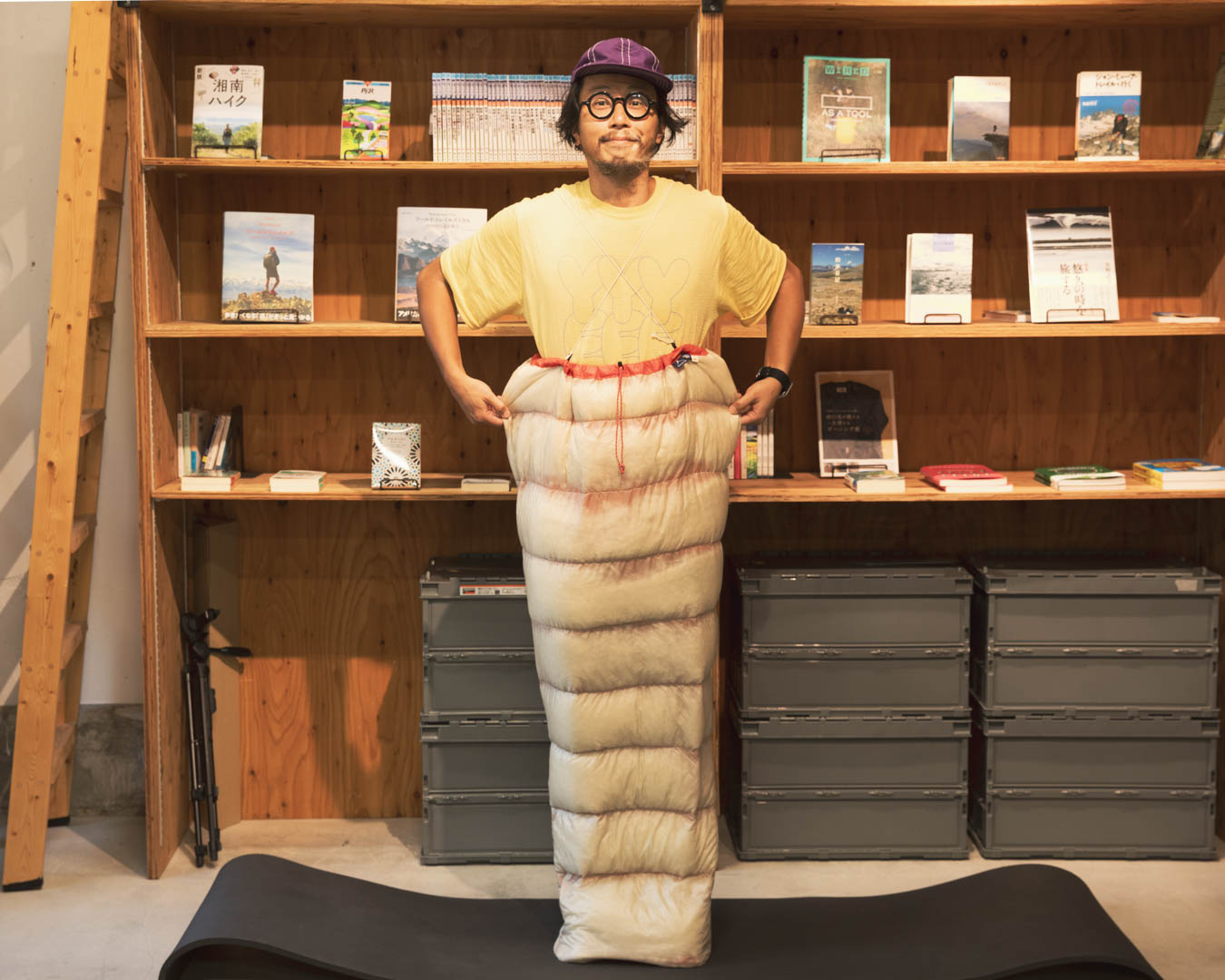

Q: This would work for high-altitude mountains in the summer.
OS: Definitely. This is my extreme setup for temperatures down to 5 degrees C.
4. Nitecore NU25 UL headlamp

Q: Shall we move on to headlamps?
OS: This is the Nitecore NU25 UL model. The main feature of this headlamp is that you can change the direction of the light. It has two lights: one that reaches far and one that lights up your feet. You can turn them on individually or together for a wide-angle illumination.
Q: Do you often move around at night?
OS: Quite often.
Q: And this works just fine for you?
OS: Yes. Also, it’s convenient that you can change the light by pressing just one button.

Q: It’s bright and small, but the battery doesn’t seem to last long. These days, lights are bright and small, which is great, but the battery life is always a concern.
OS: If you use the highest brightness setting, the battery won’t last long. But on the lower setting, it lasts quite a while.
Q: I see. Nitecore is known for making batteries, so they probably have a good handle on that. Also, it’s nice that the strap is an elastic cord. The headlamp itself is small. The strap often takes up a lot of space, which I don’t like.
Q: Exactly. Also, the plastic material feels a bit cheap, but that adds to its charm. The battery level indicator with four stages and USB-C compatibility are also nice features.


Q: LED lights and batteries have especially seen advancements in high power, lightweight, and affordable options in recent years. This seems like a light of the current era.
4. Hatchet Metal Work Studio Limited Aluminum "All Seeing Eye" Guardian Bell

Q: And next, is this a bear bell?
OS: Yes, it’s an “All Seeing Eye” Guardian Bell from Hatchet Metal Work Studio. It’s really small and the sound is delicate, so you might wonder if it even works as a bear bell. But good, small bells are hard to come by. I fell in love with this suspicious Freemason-like design at first sight and bought it.
Q: Does this brand mainly make things like this?
OS: They also make accessories, bicycle valve caps and cable ends.
Q: Cable ends tend to get lost, so I might want some of those.
OS: It’s cute, right? It’s a unique, fun design. I found it and bought it immediately.

Q: According to the website, Hatchet seems to make only niche items like this. How did you even find something like this?
OS: I somehow stumbled upon it.
5. BRS 3000T + E Cooker Gas Canister

OS: The last item I want to talk about comes in a set. It’s the BRS 3000T stove and e-cooker gas canister set –– the lightest gas stove set available.
Q: This gas canister is really tiny. Where did you find something like this?
OS: It’s a Japanese product. I’ve removed the paint from mine. It was originally designed for small stoves used in places like ryokan (Japanese inns) where they heat individual hot pots. It’s made specifically for those kinds of small stoves.

Q: Can you still buy these?
OS: You can find information online, but it seems they’ve recently stopped production.
Q: How much gas does this canister hold?
OS: A small OD gas canister holds 110 g, but this one holds 12 g. It’s enough to boil 400 ml of water twice, with a little leftover. If you’re just having dried food morning and evening, it’s perfect for an overnight (two-day) trip.
Q: The BRS stove is so tiny, it makes the regular gas canisters look huge in comparison.
OS: Exactly. I was looking for something that would work for me when I found this.
Q: The BRS stove makes you want to use a smaller canister. Normal gas stoves seem too big and unstable with such a small stove.
OS: Yes, the BRS stove has a tiny, slippery pot stand and can be tricky to use, but the fact that it’s so lightweight is its biggest draw.
Q: Some people have mixed feelings about using BRS because it’s viewed as a Chinese brand. But I think this is a masterpiece. It makes you wonder why big Western or Japanese companies haven’t made something this small yet.
OS: Exactly.
Q: There might be a reason. But if BRS can make it, other companies should be able to make something even better. This stove has definitely encouraged more hikers to use gas stoves again. But isn’t there a special small stove for these gas canisters?
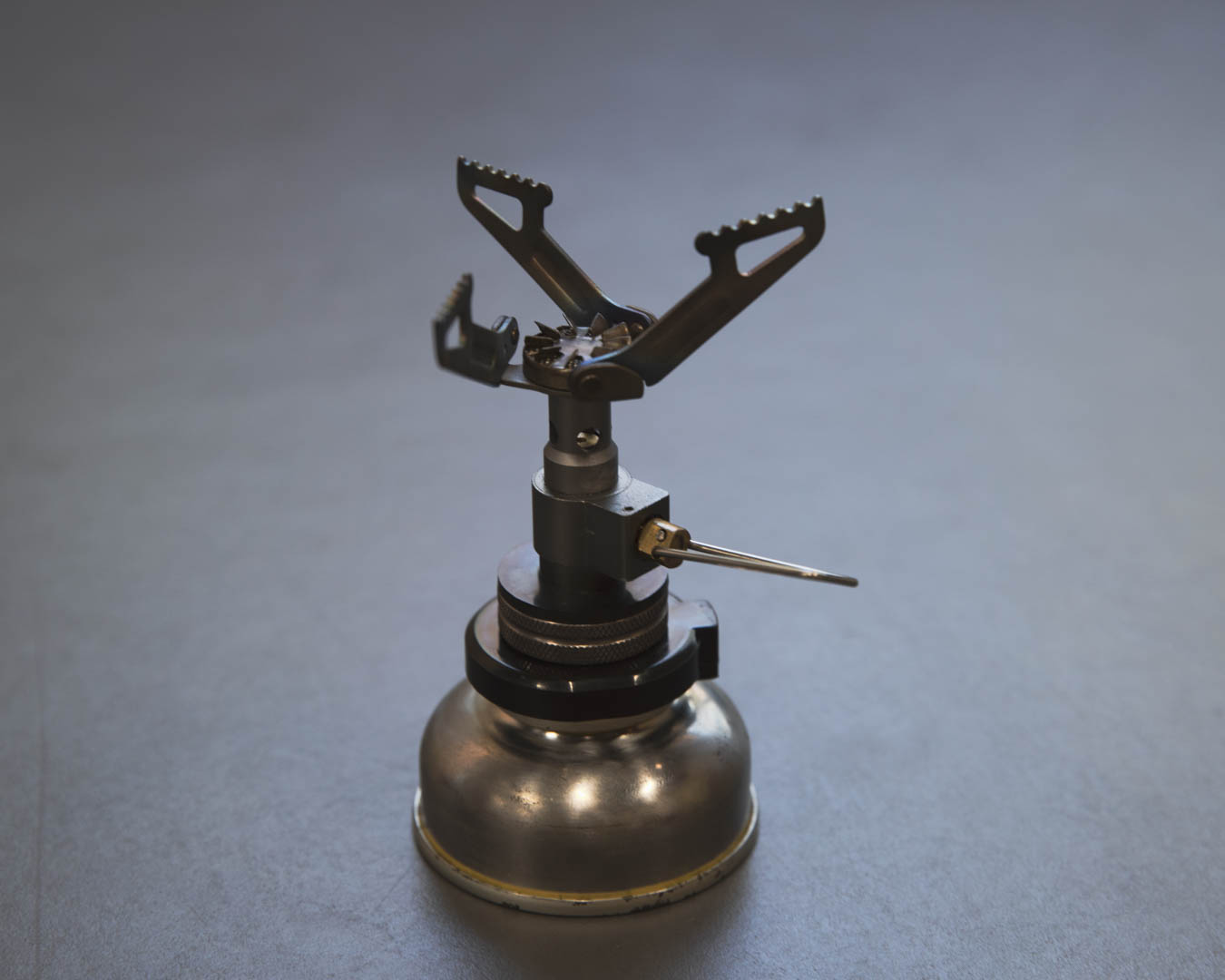
OS: There is. But it doesn’t have a pot stand because it’s meant for those single-serve hot pots at inns.
Q: I see. Since it won’t fit directly on a regular outdoor stove, you use a conversion adapter.
OS: Exactly. But this adapter isn’t specifically for the e-cooker, so I had to find one that fit. Most adapters on the market are for four-pronged stoves. The one I have is three-pronged, and its diameter fits perfectly. Regular ones don’t fit. This adapter usually allows you to connect a household gas canister to an outdoor stove.
Q: Got it. That makes sense. Where did you find this adapter?
OS: I got it from the California Patio online shop. There isn’t much information online about the e-cooker, so I had to research a lot to find this adapter.
Q: It was a bit of a gamble, but when you tried it, it fit perfectly. Like a Cinderella-shoe fit!
OS: Exactly. It was: “This is it!”
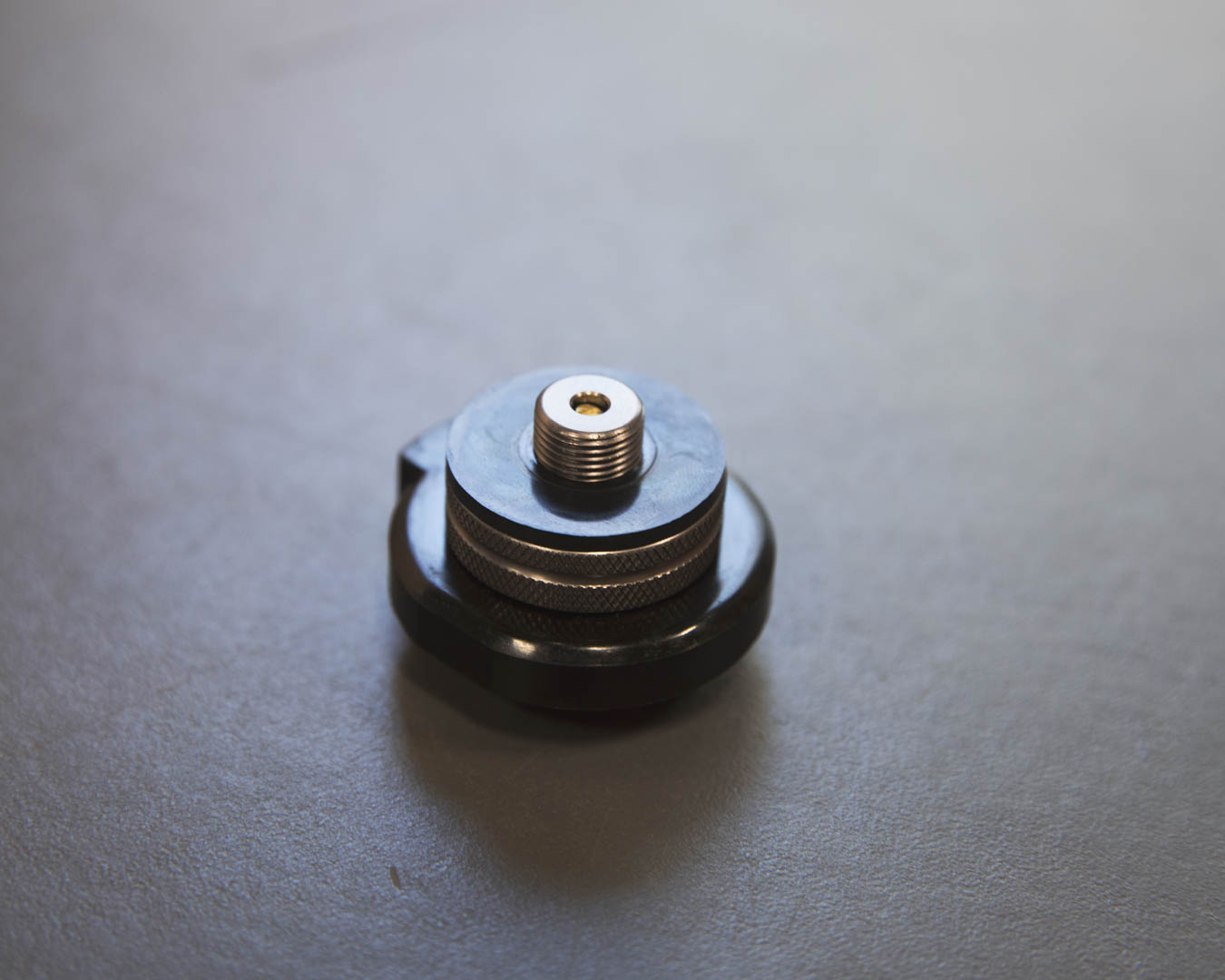
Q: Do you refill the gas canisters with Alva’s Tsumekae-kun?
OS: Exactly.
Q: Among gas cooking systems, this would seem to be the lightest.
OS: For an overnight (two-day) trip, this is what I bring. It’s perfect for fastpacking. You can even bring two of these gas canisters if you want.
Q: True. Two would be good.
OS: And it still wouldn’t weigh much. You could even bring three.
Q: If the canisters were this size, you could. That would be enough for a three-day trip.
OS: Exactly. That’s definitely an option.







